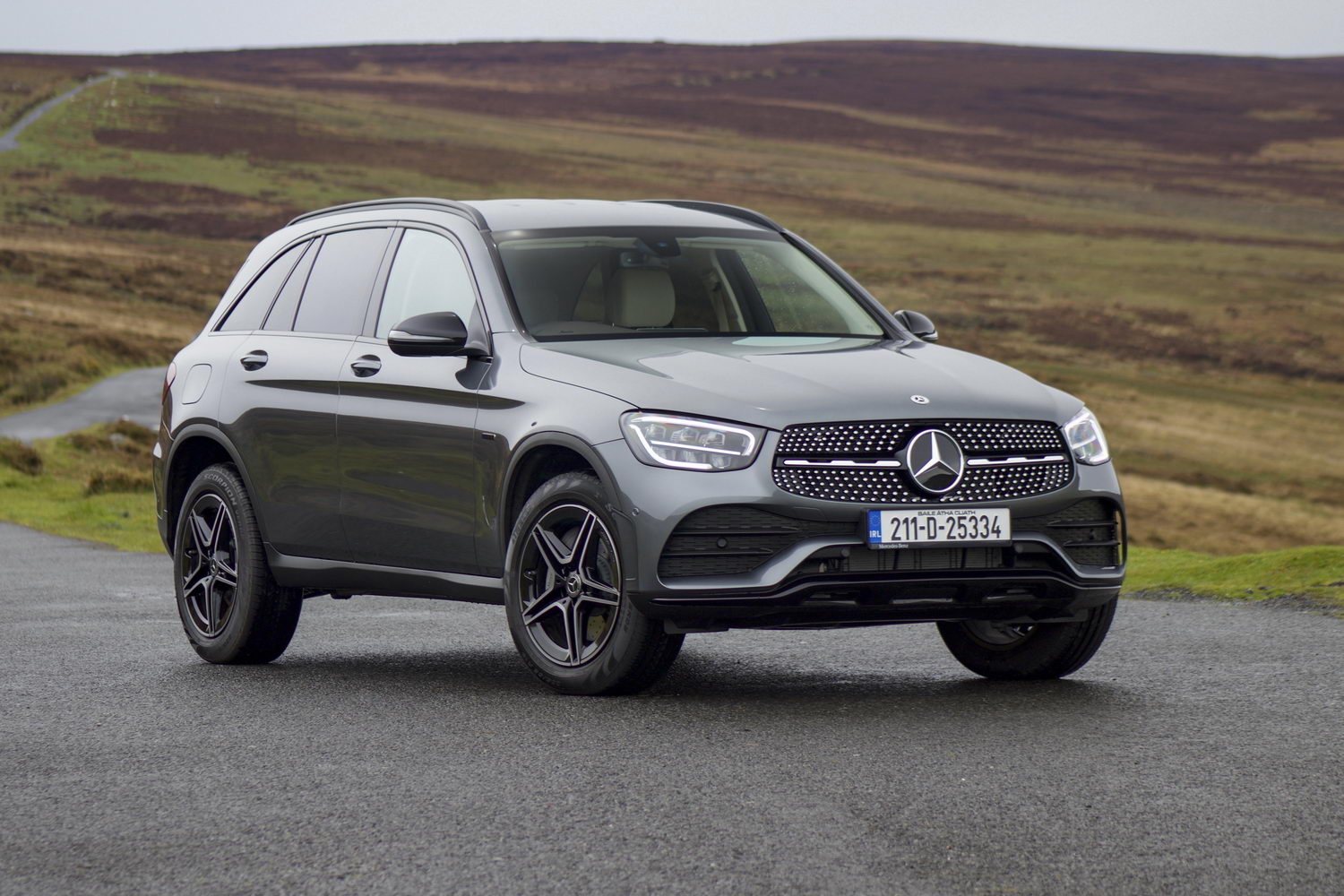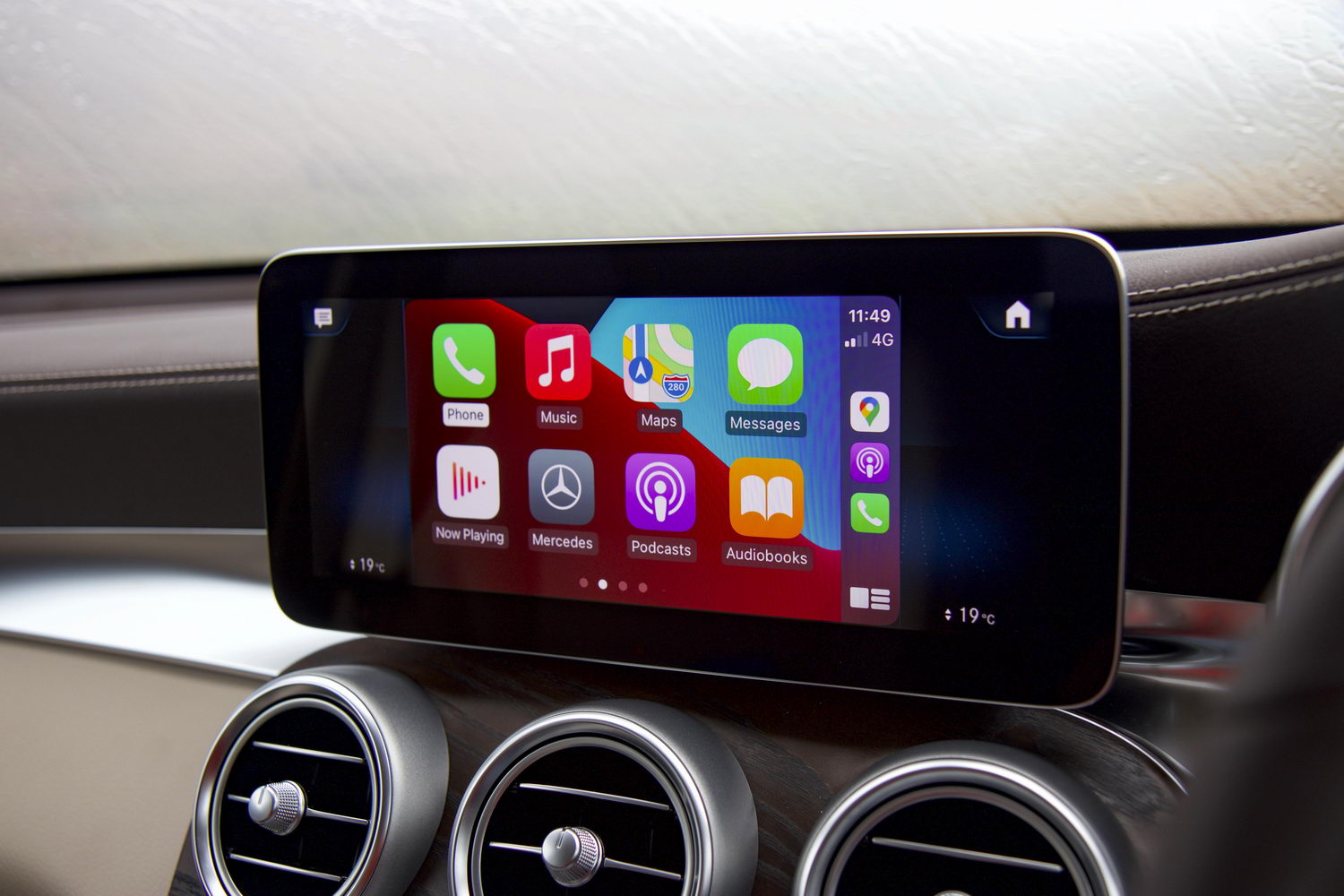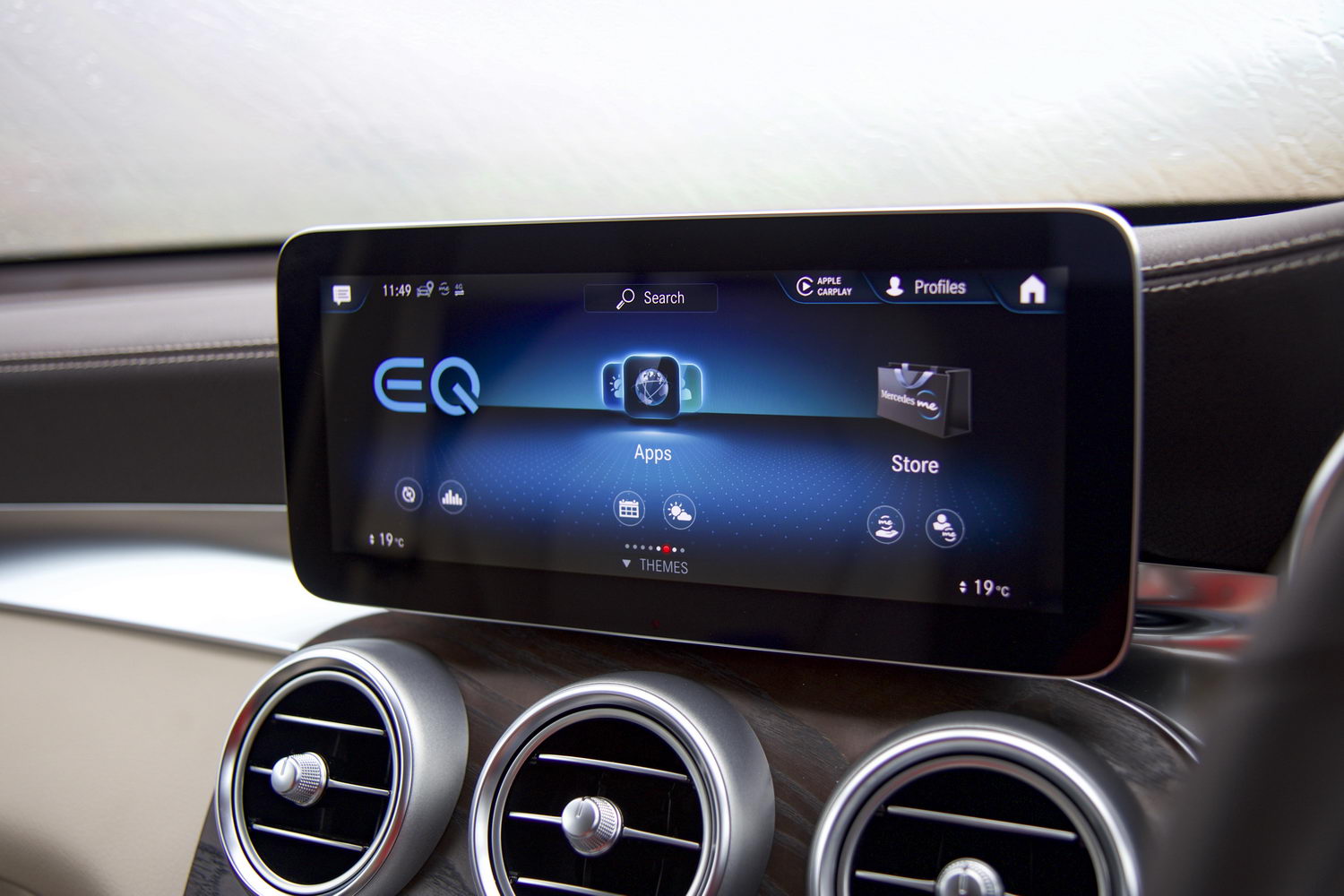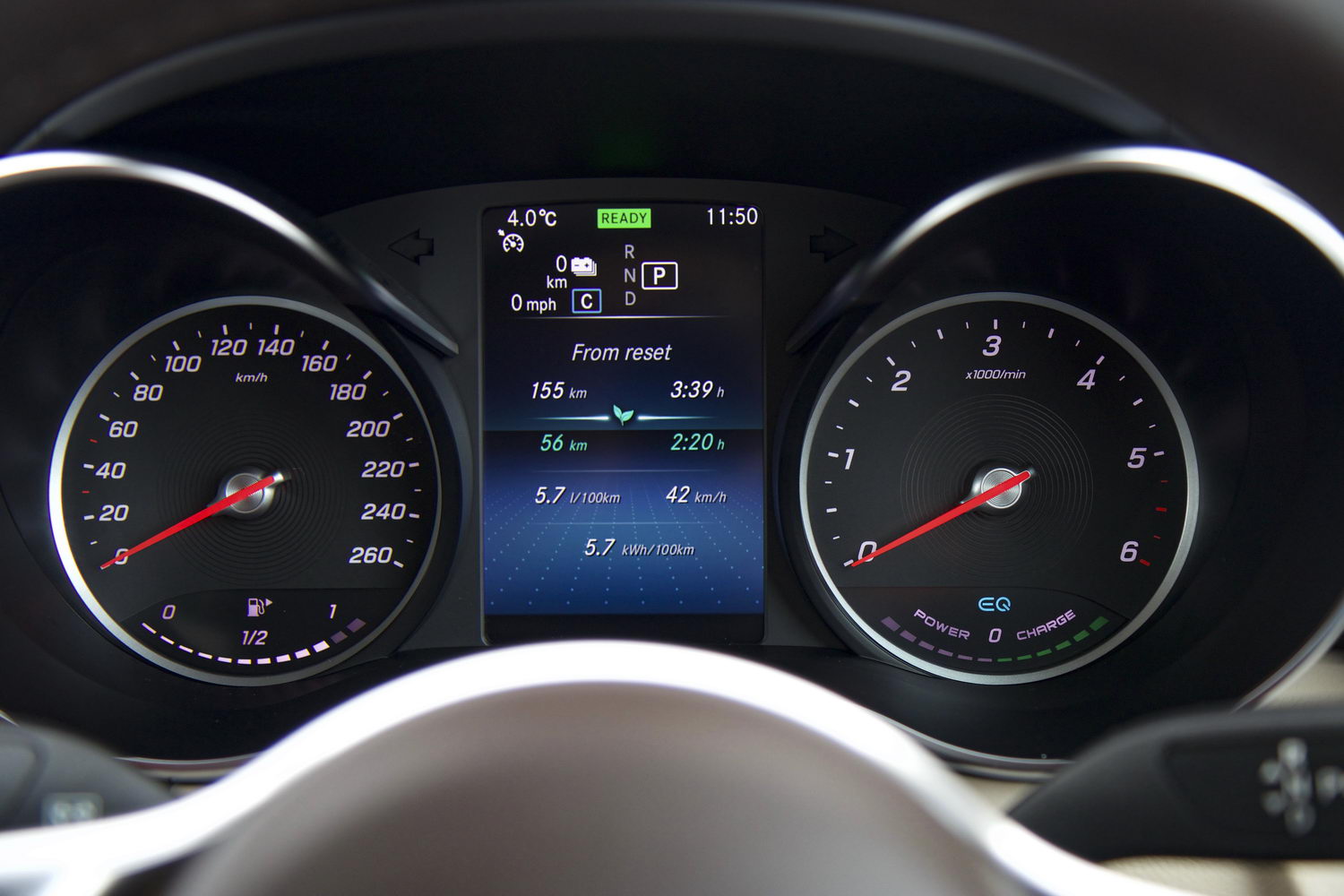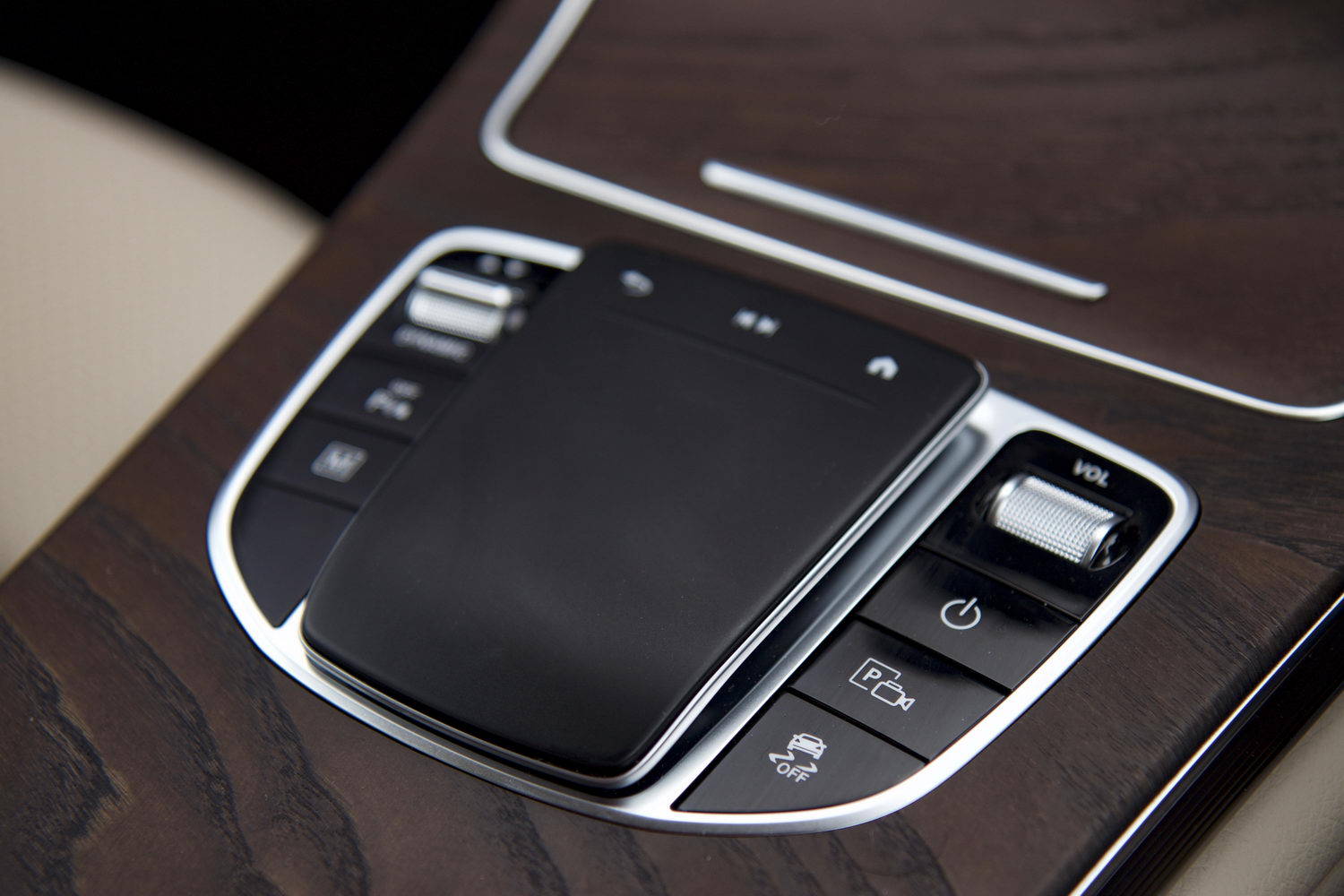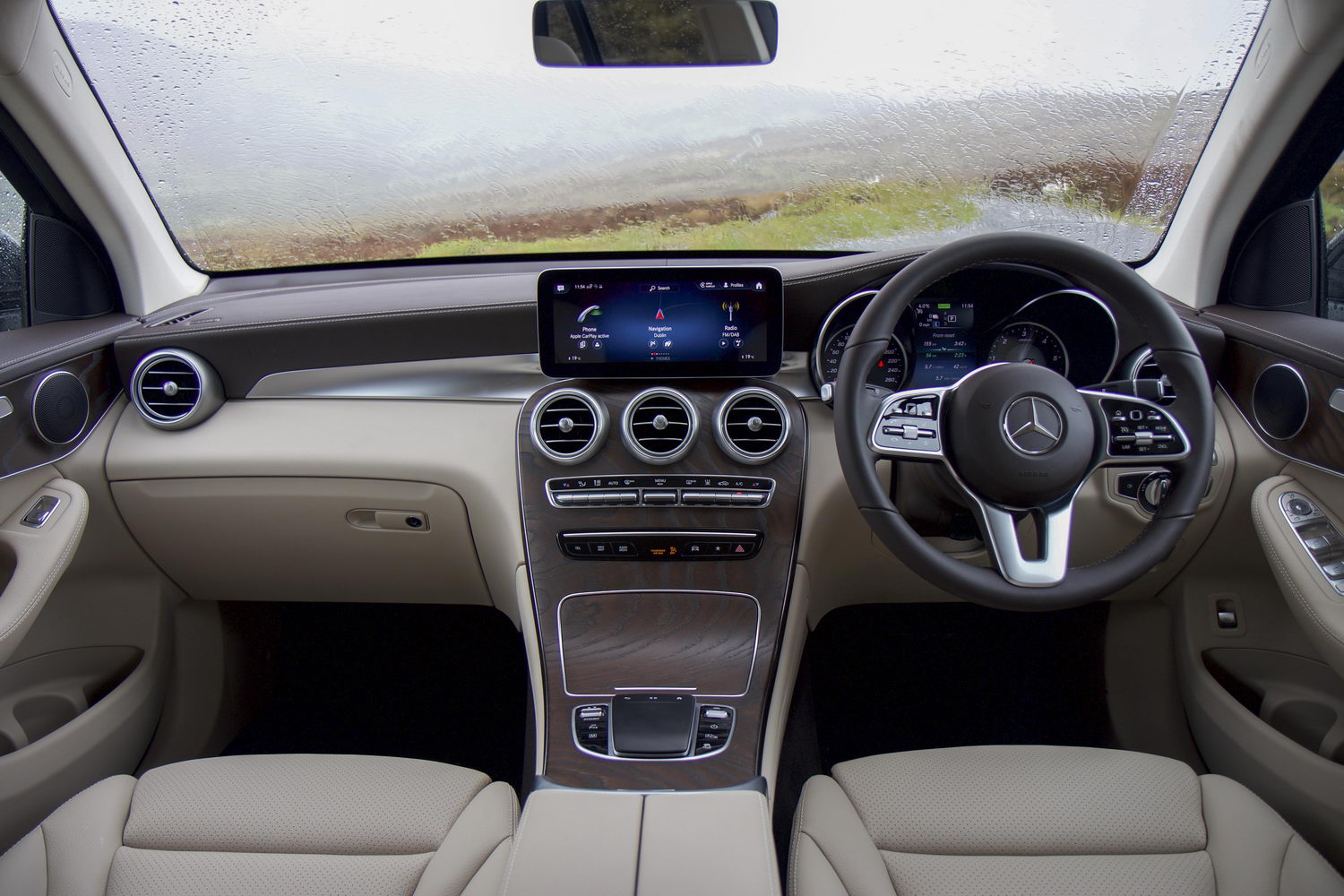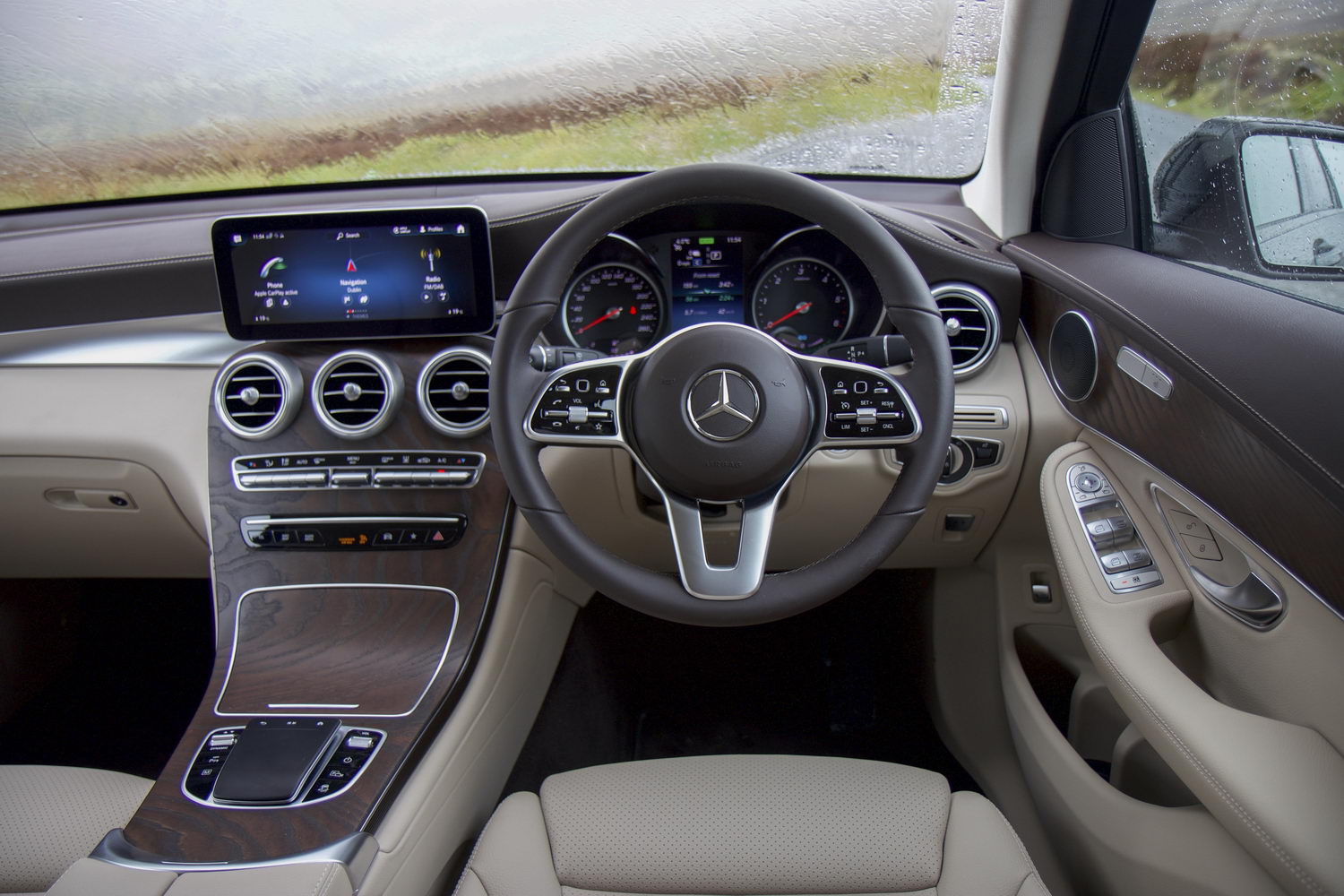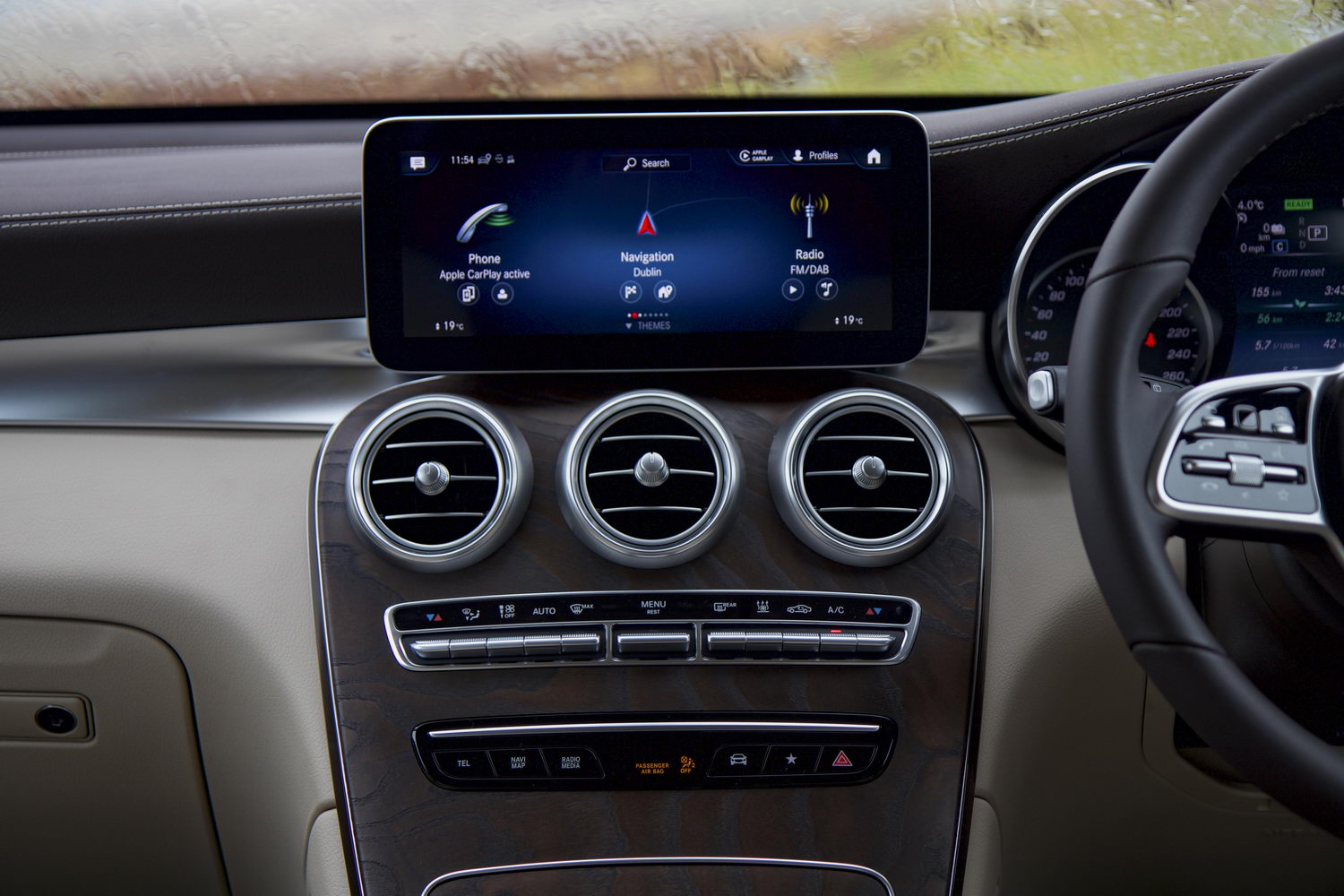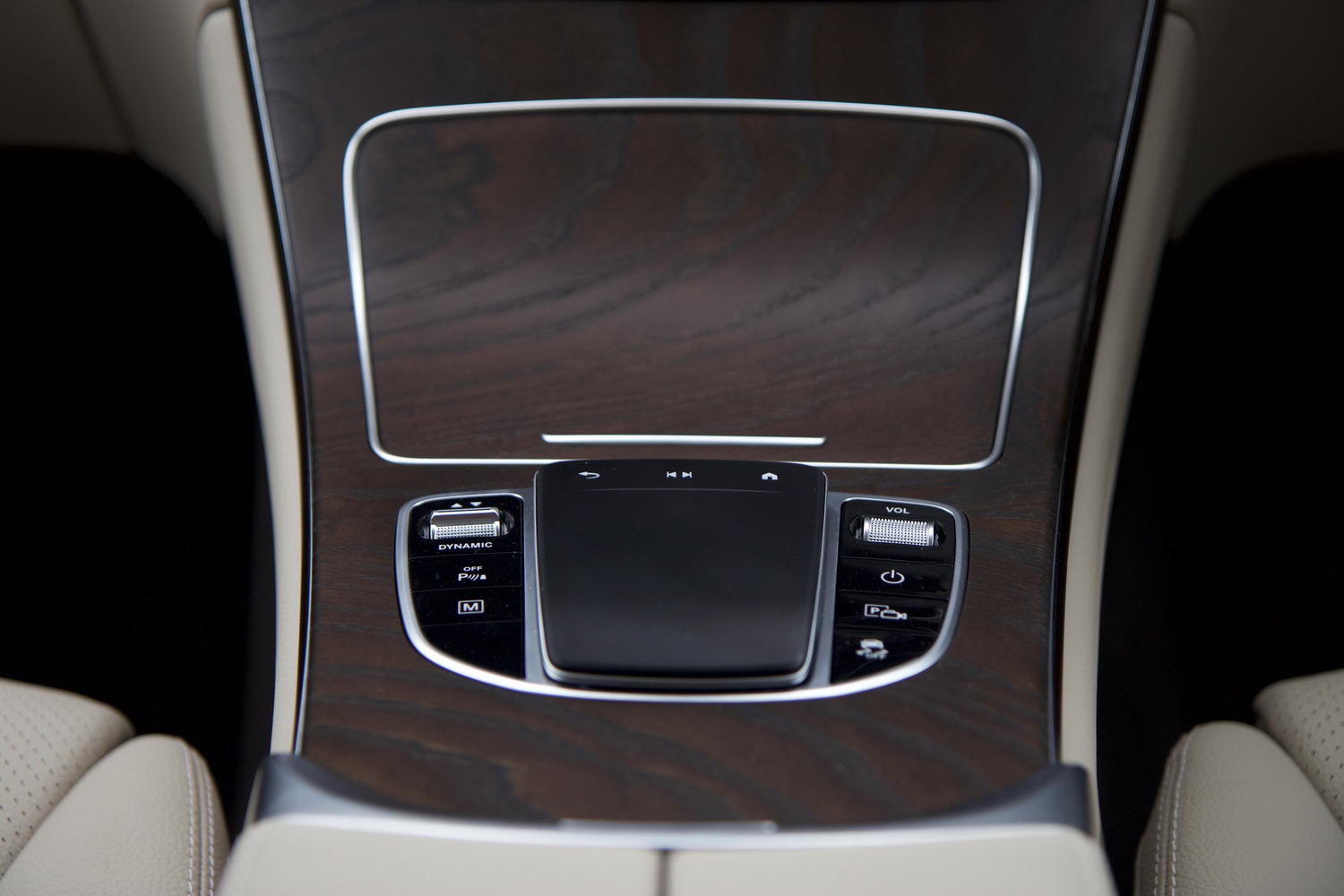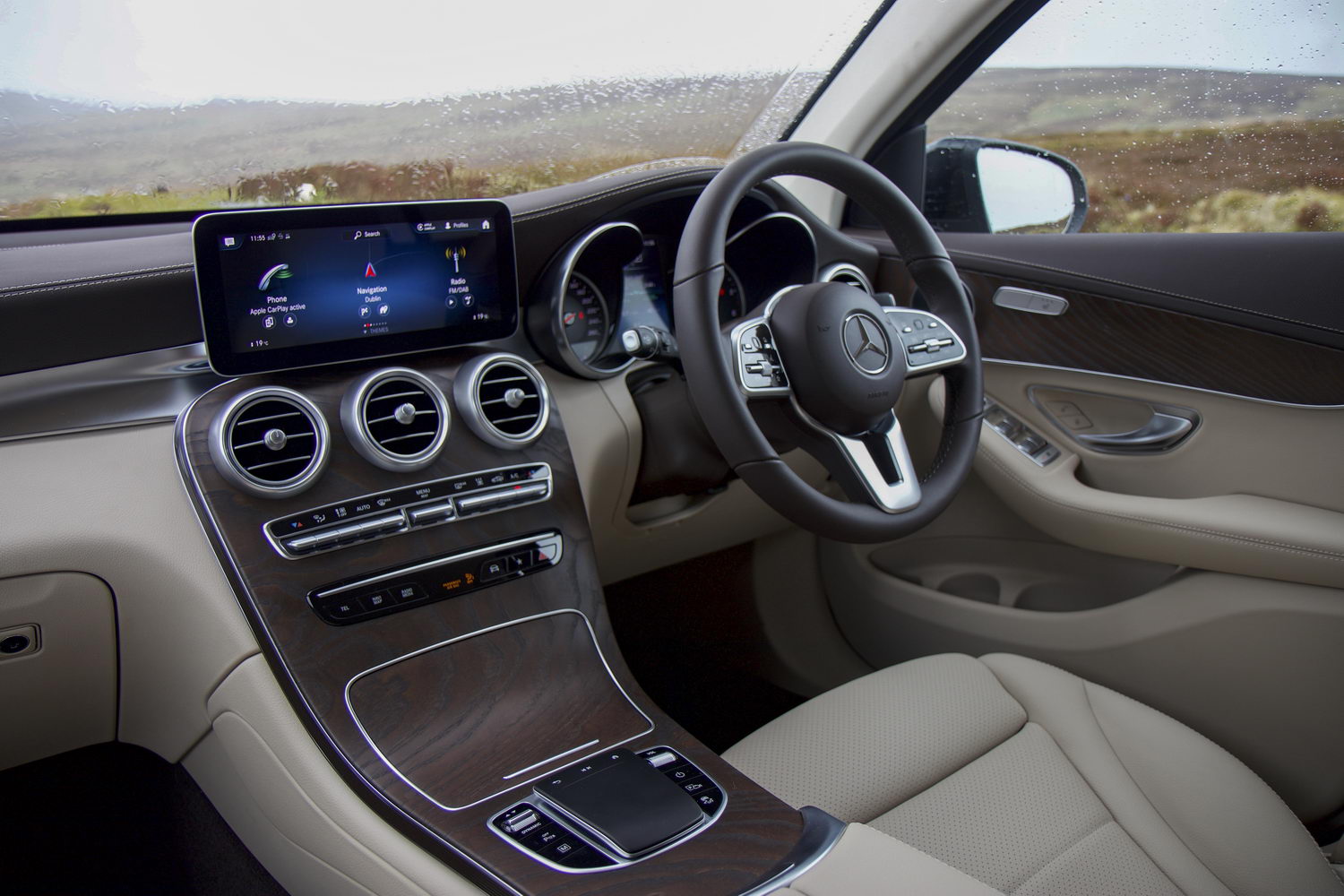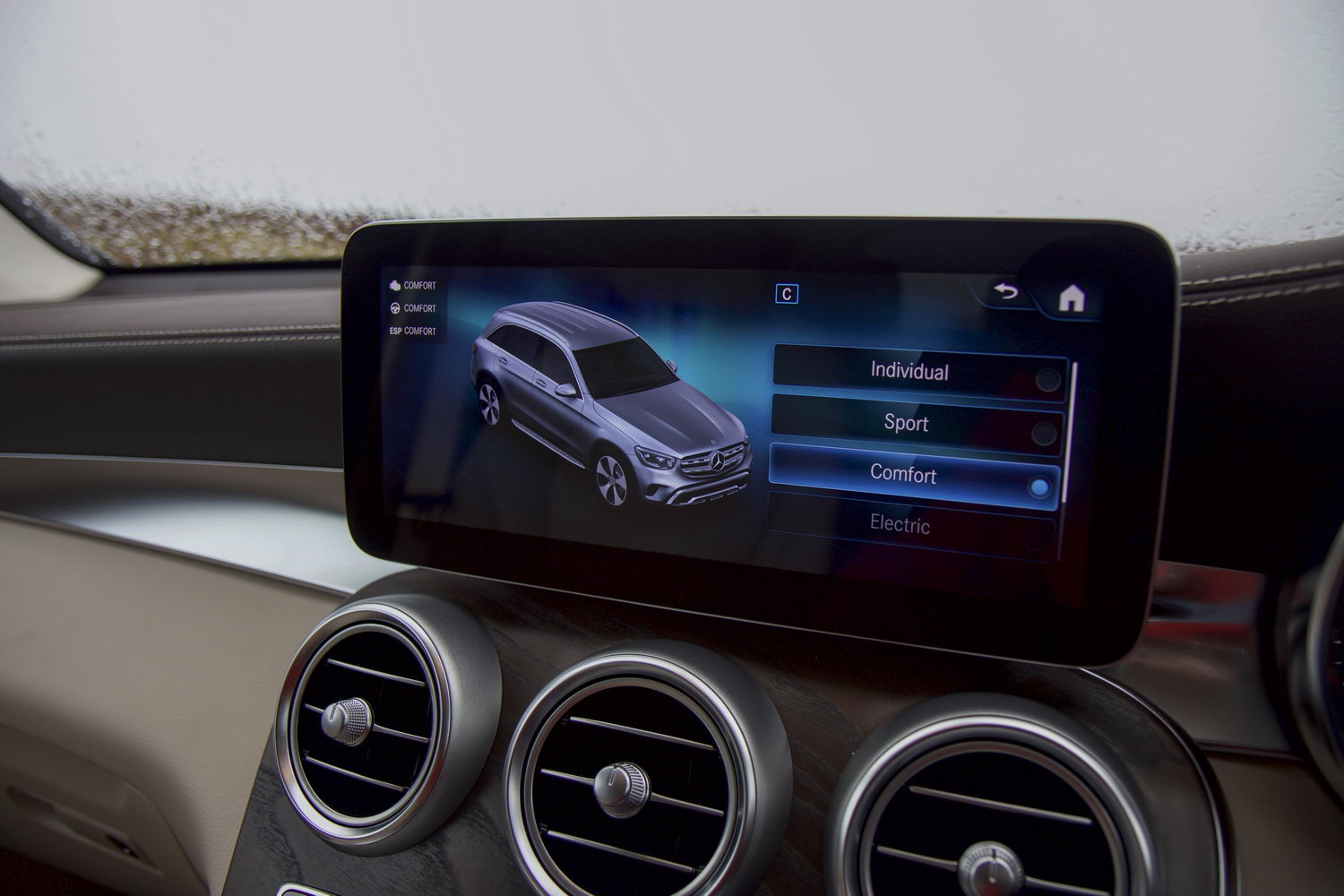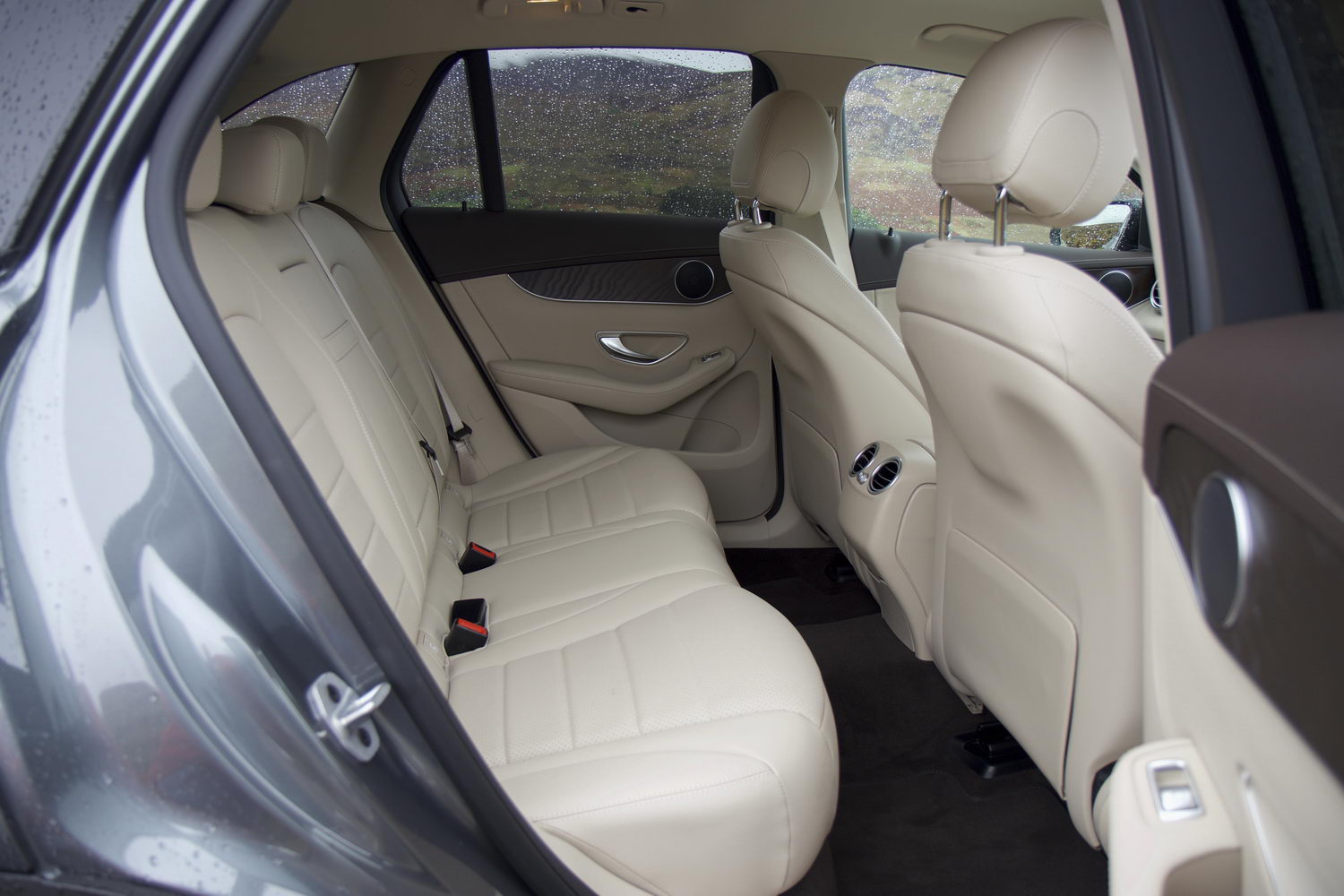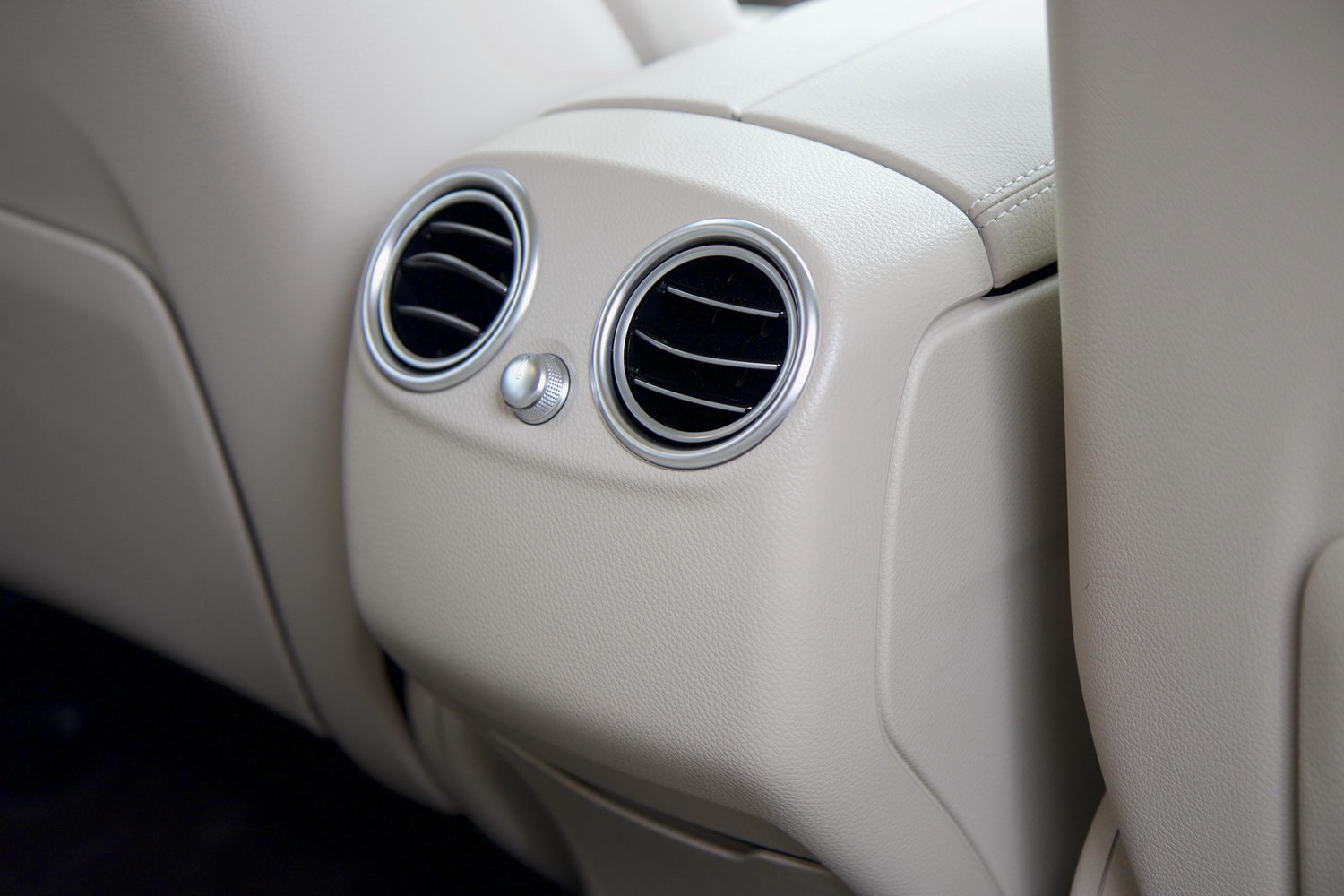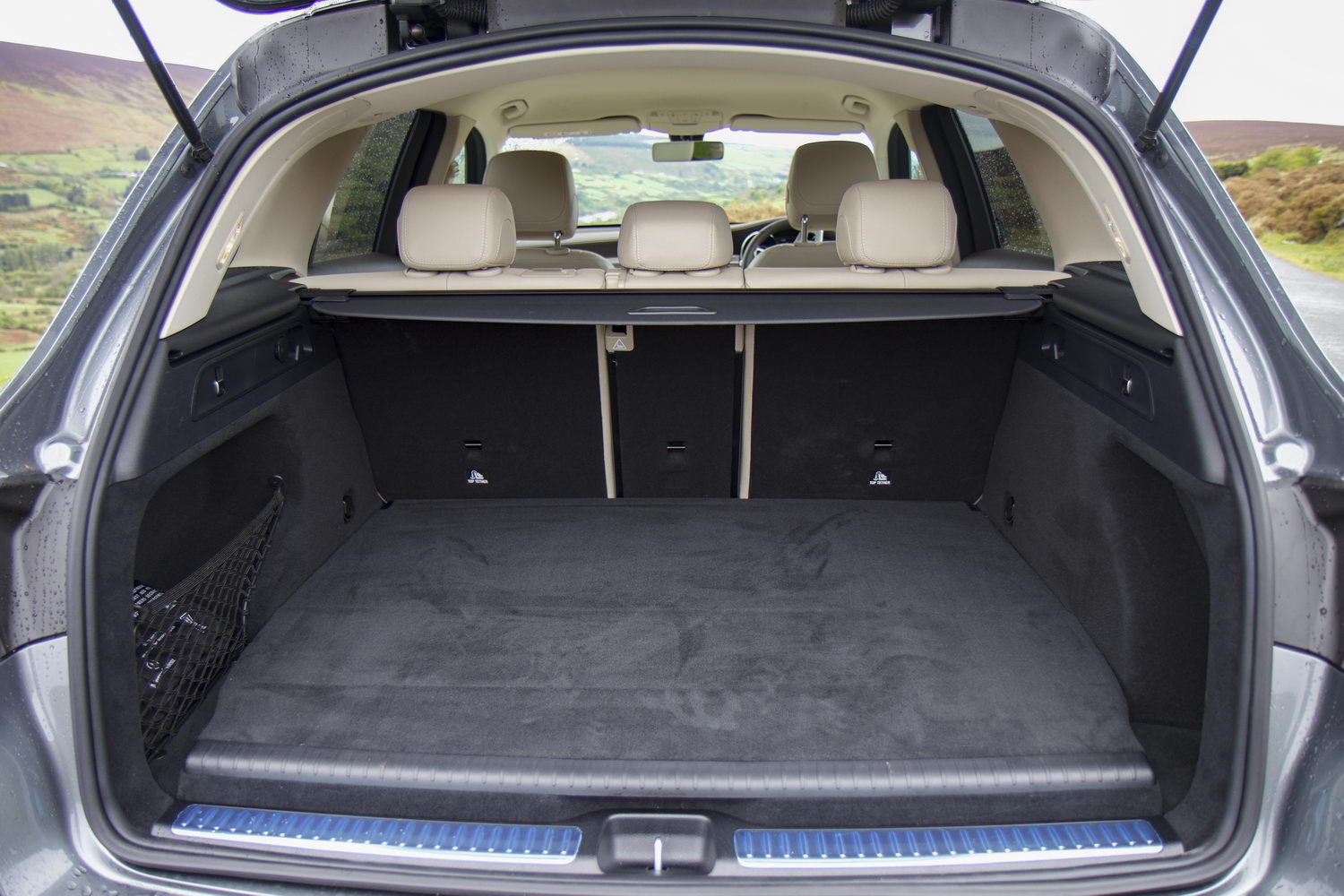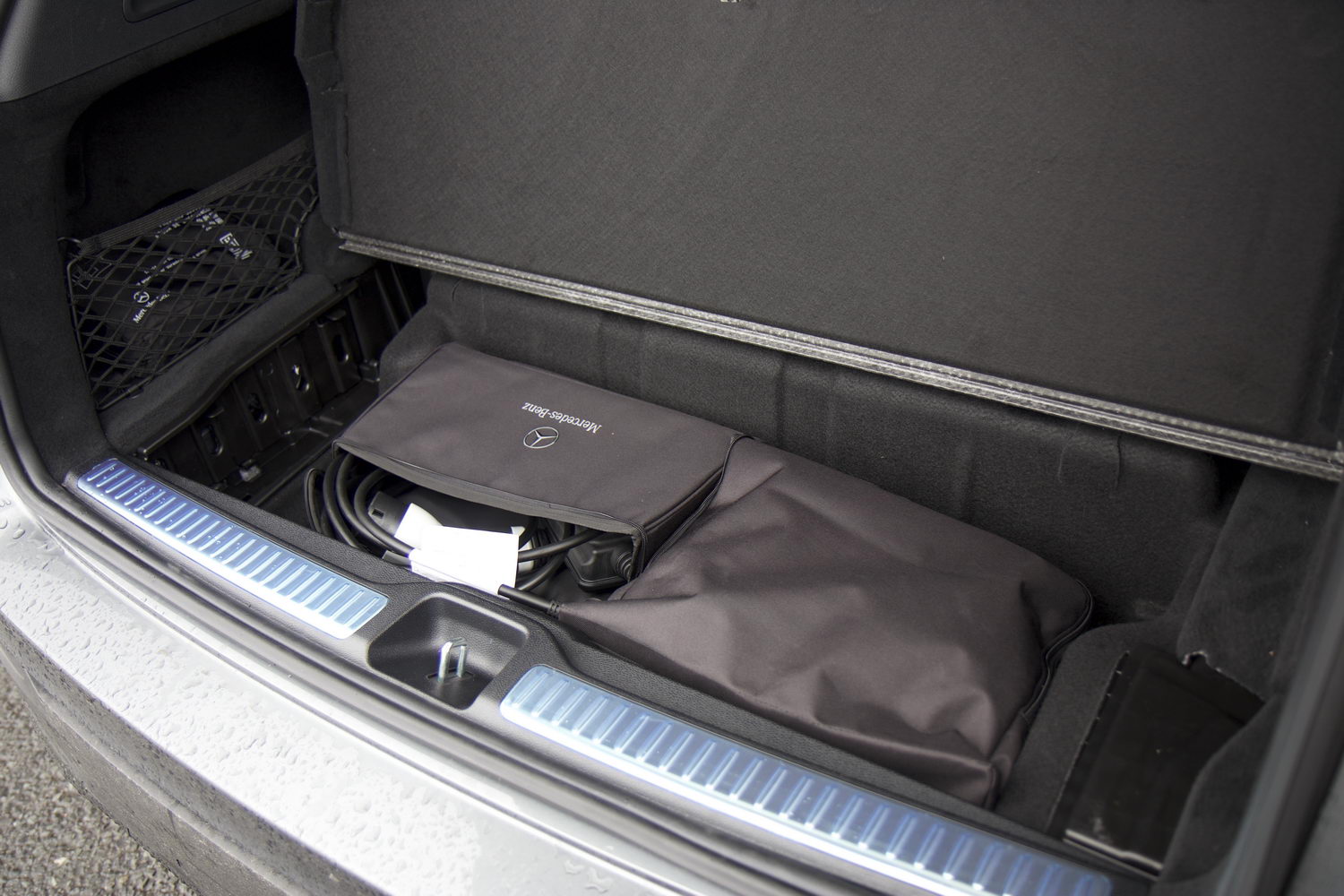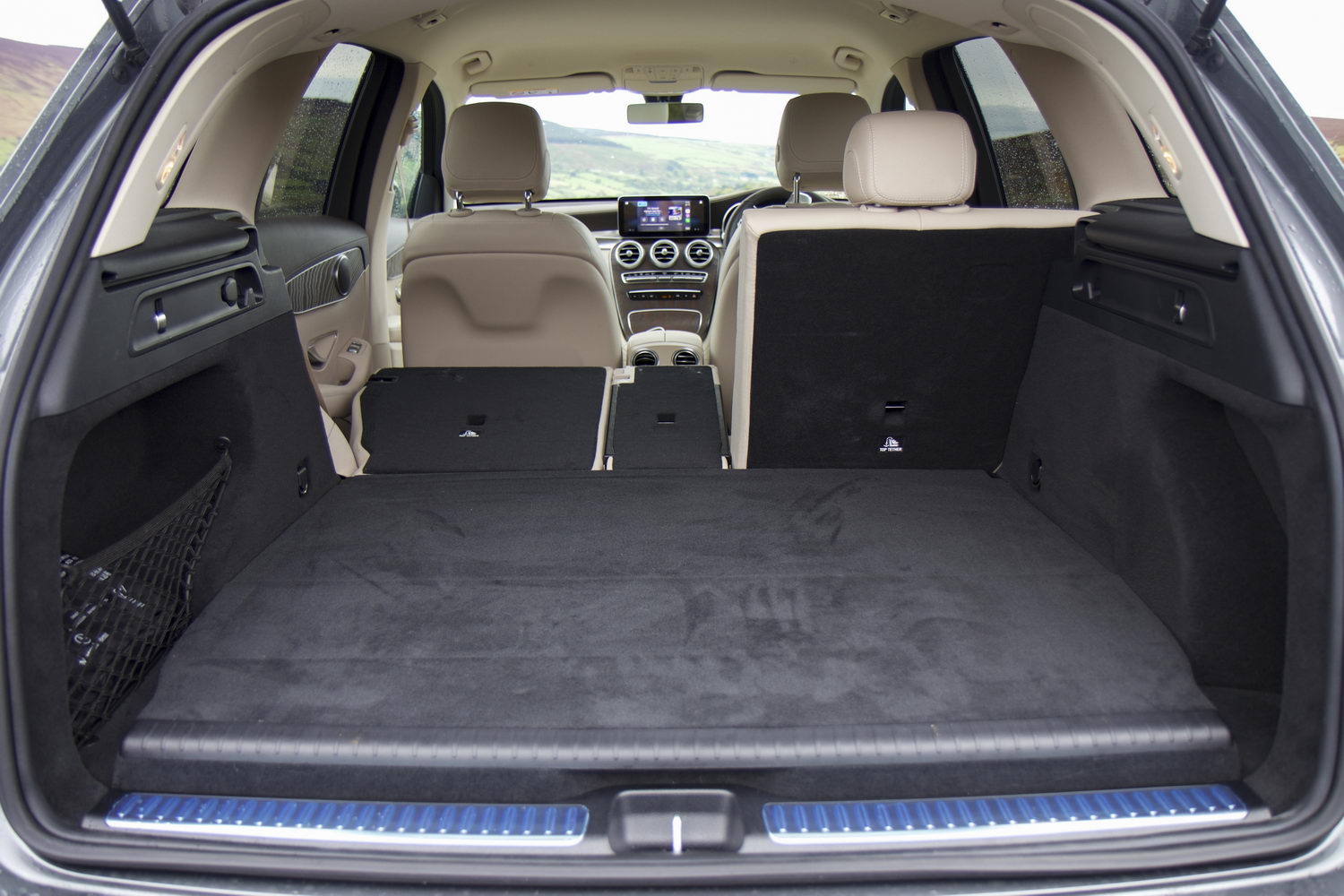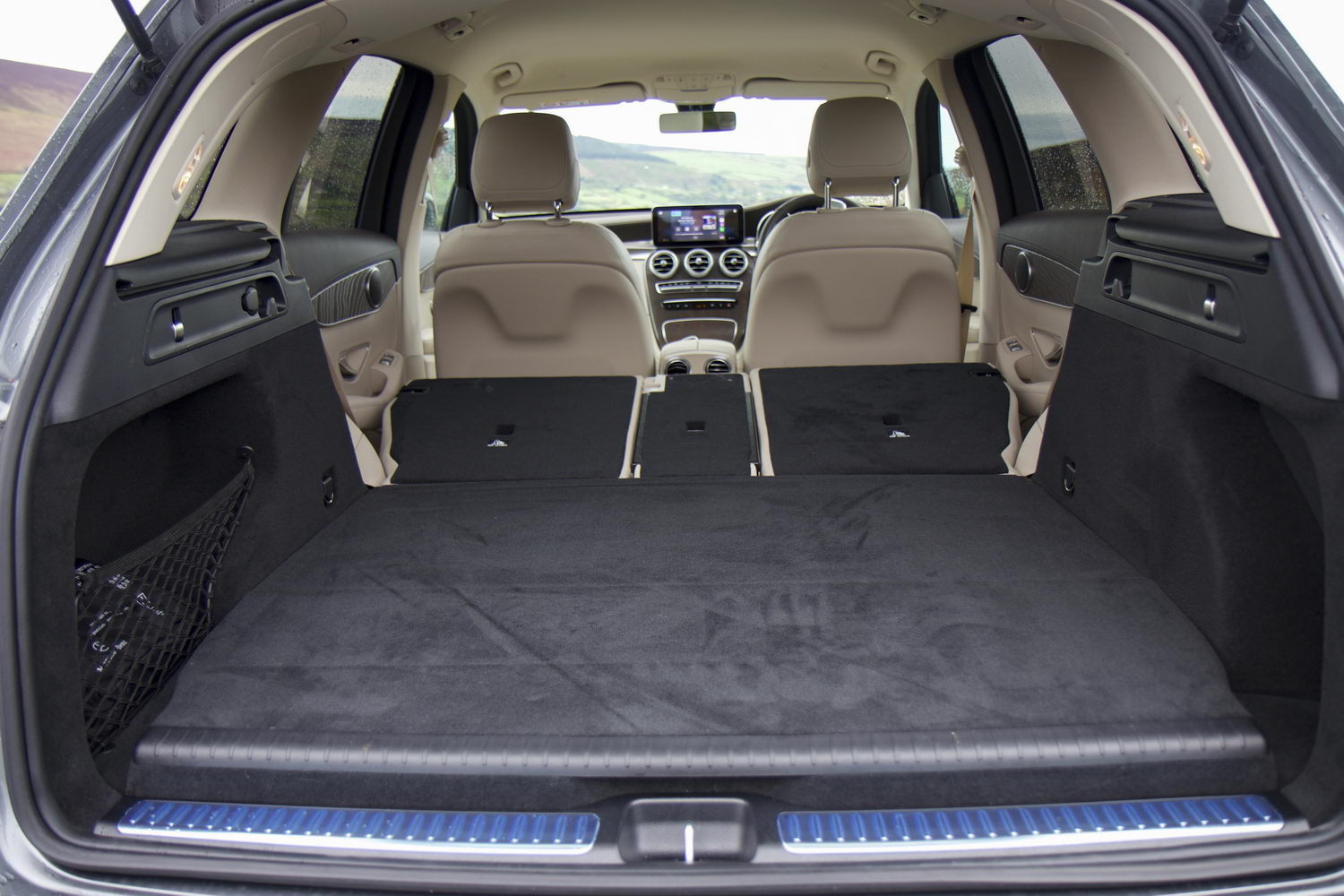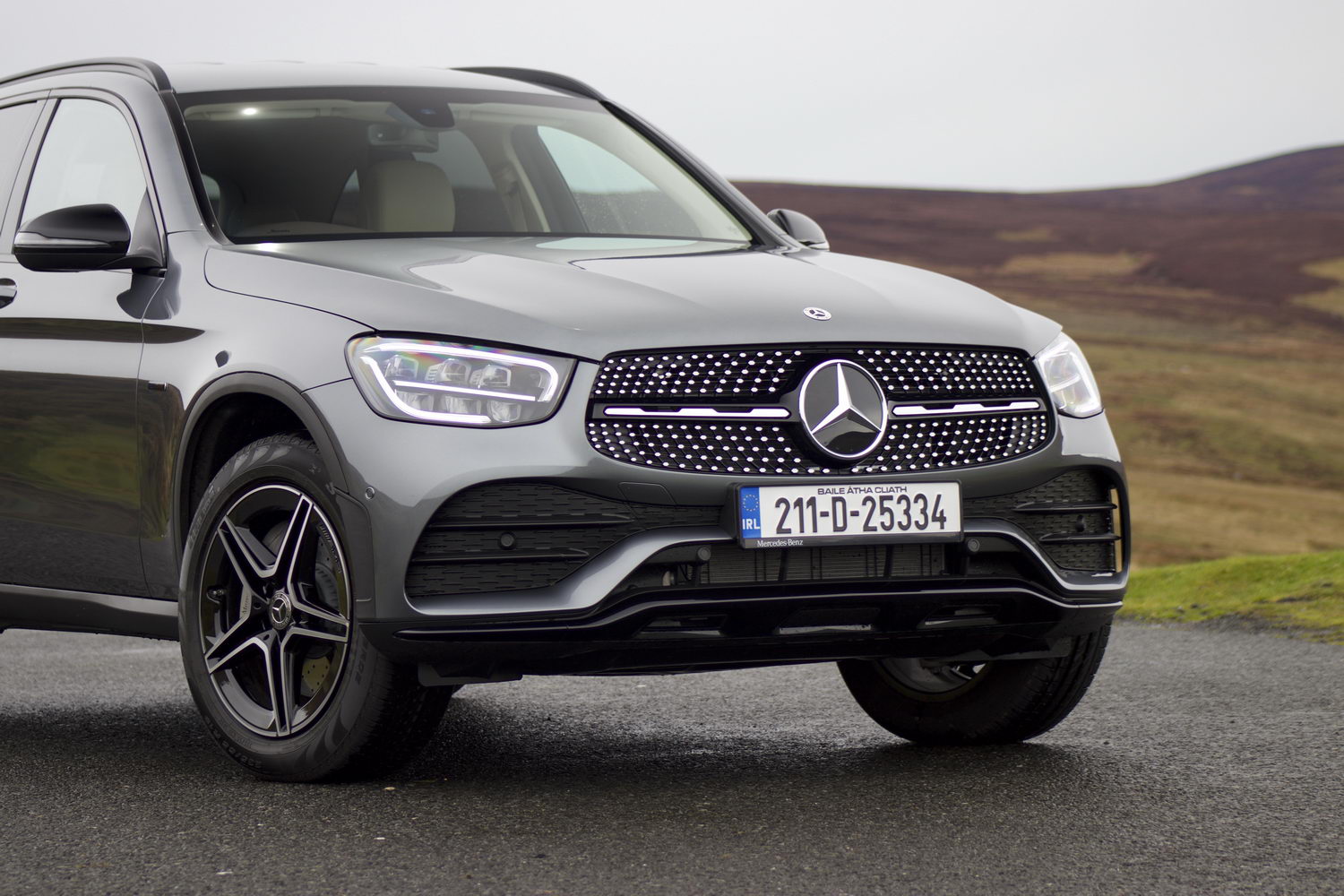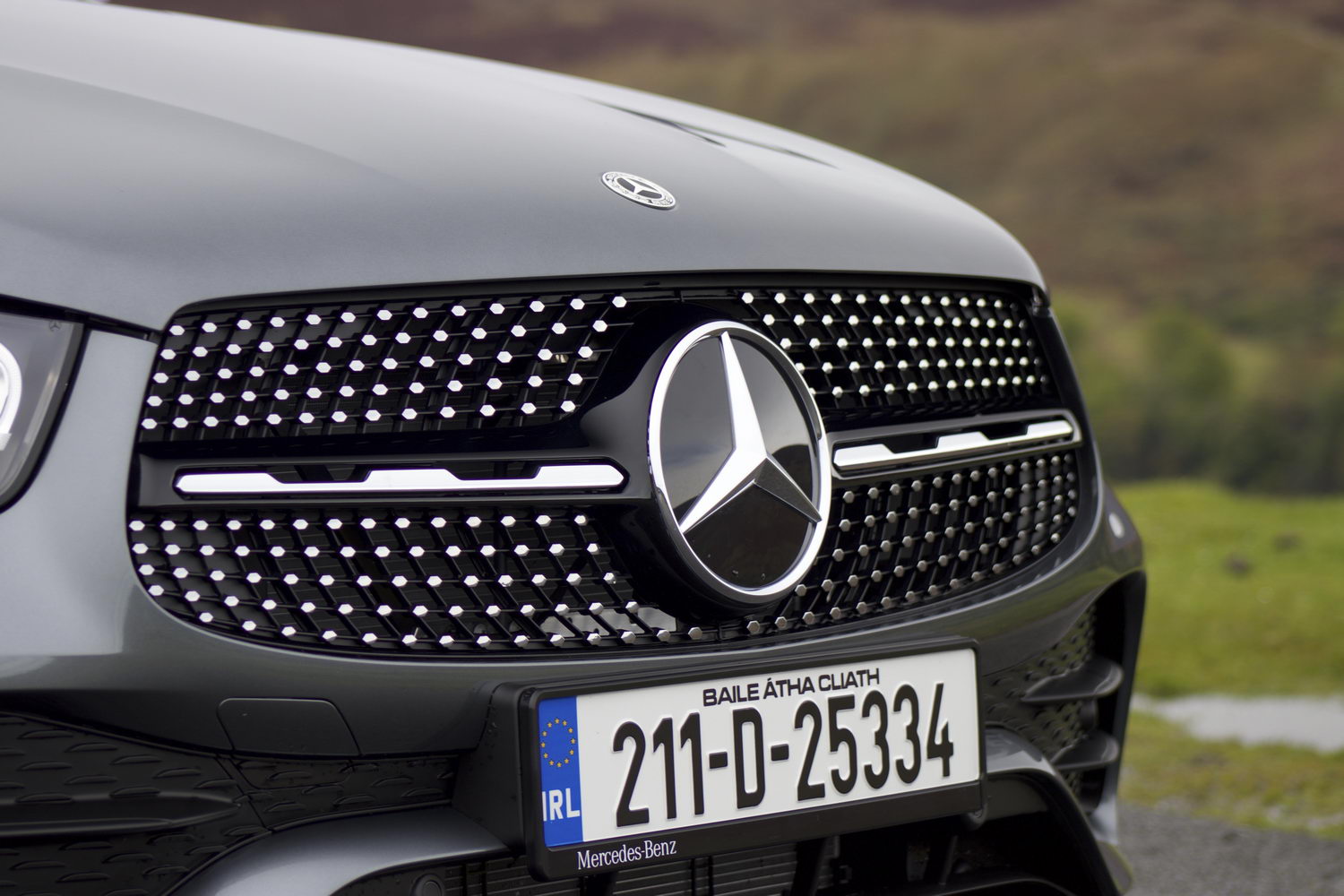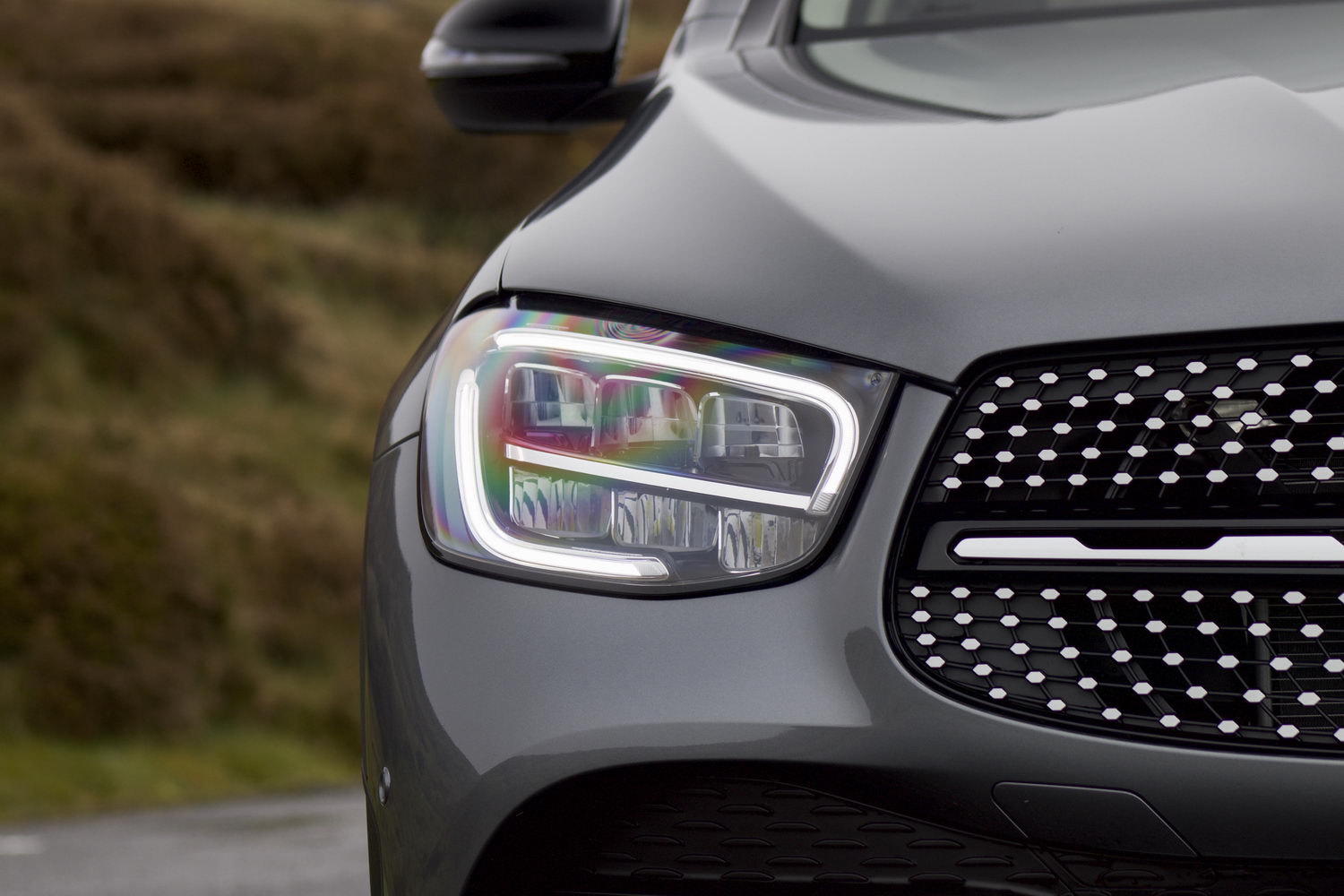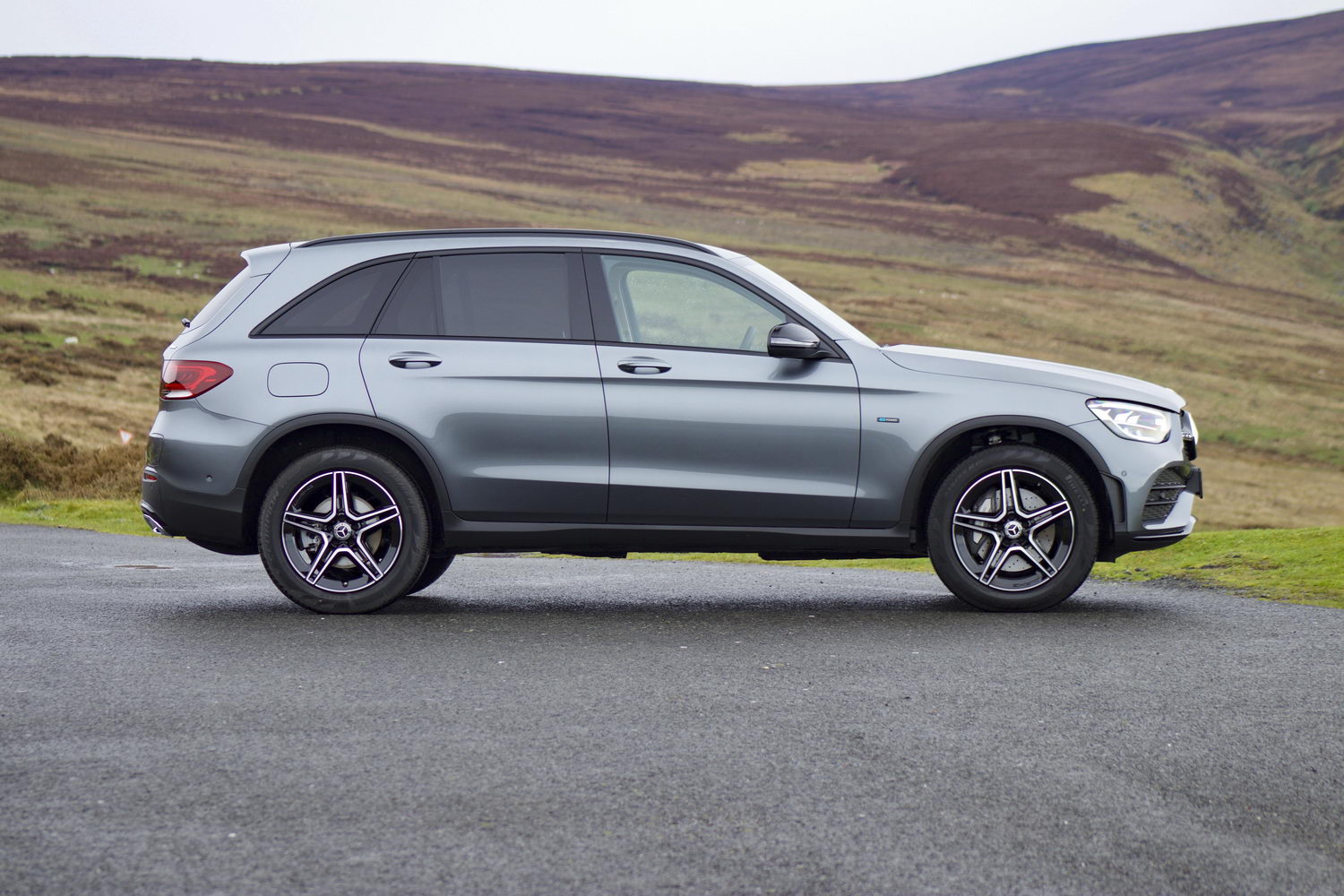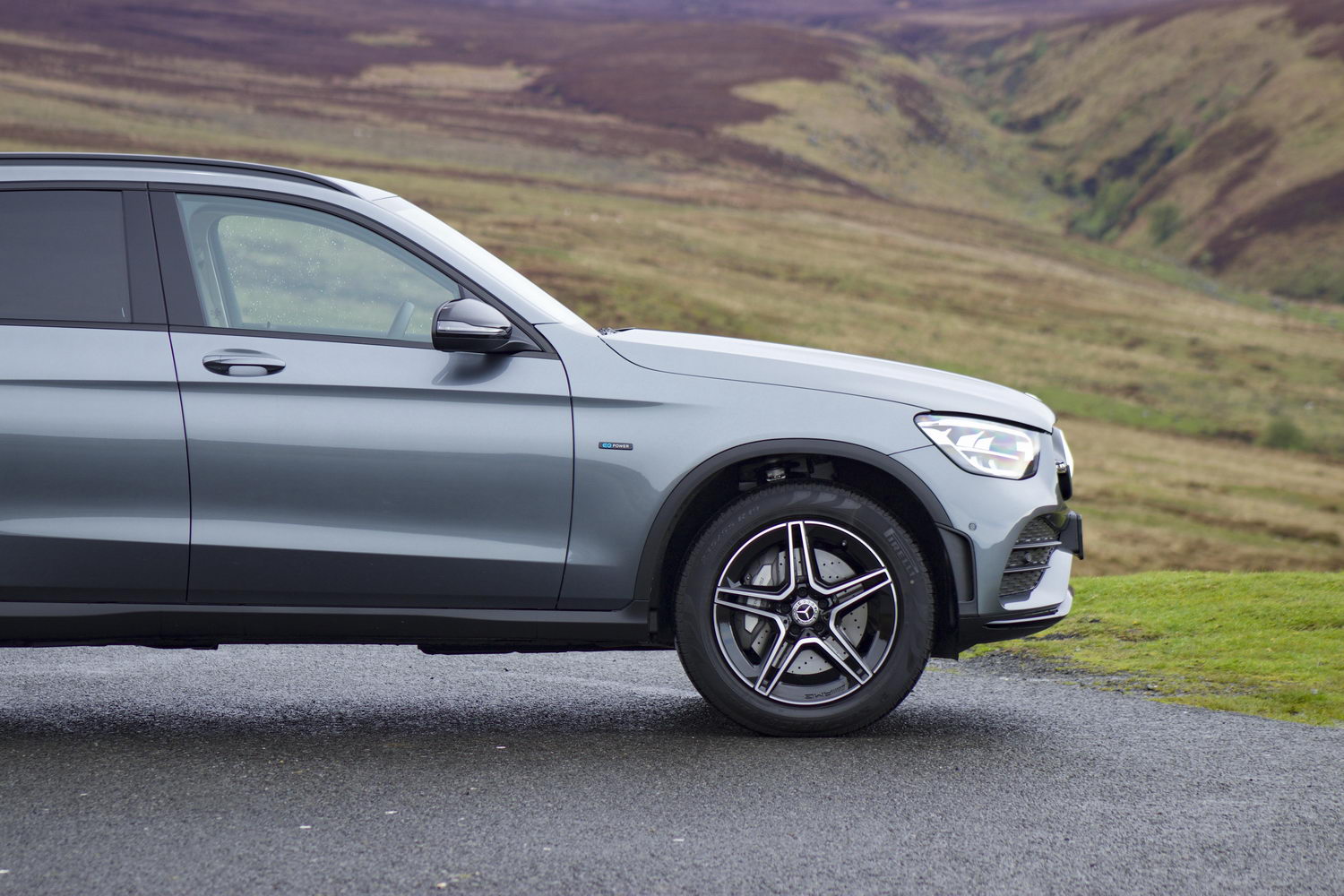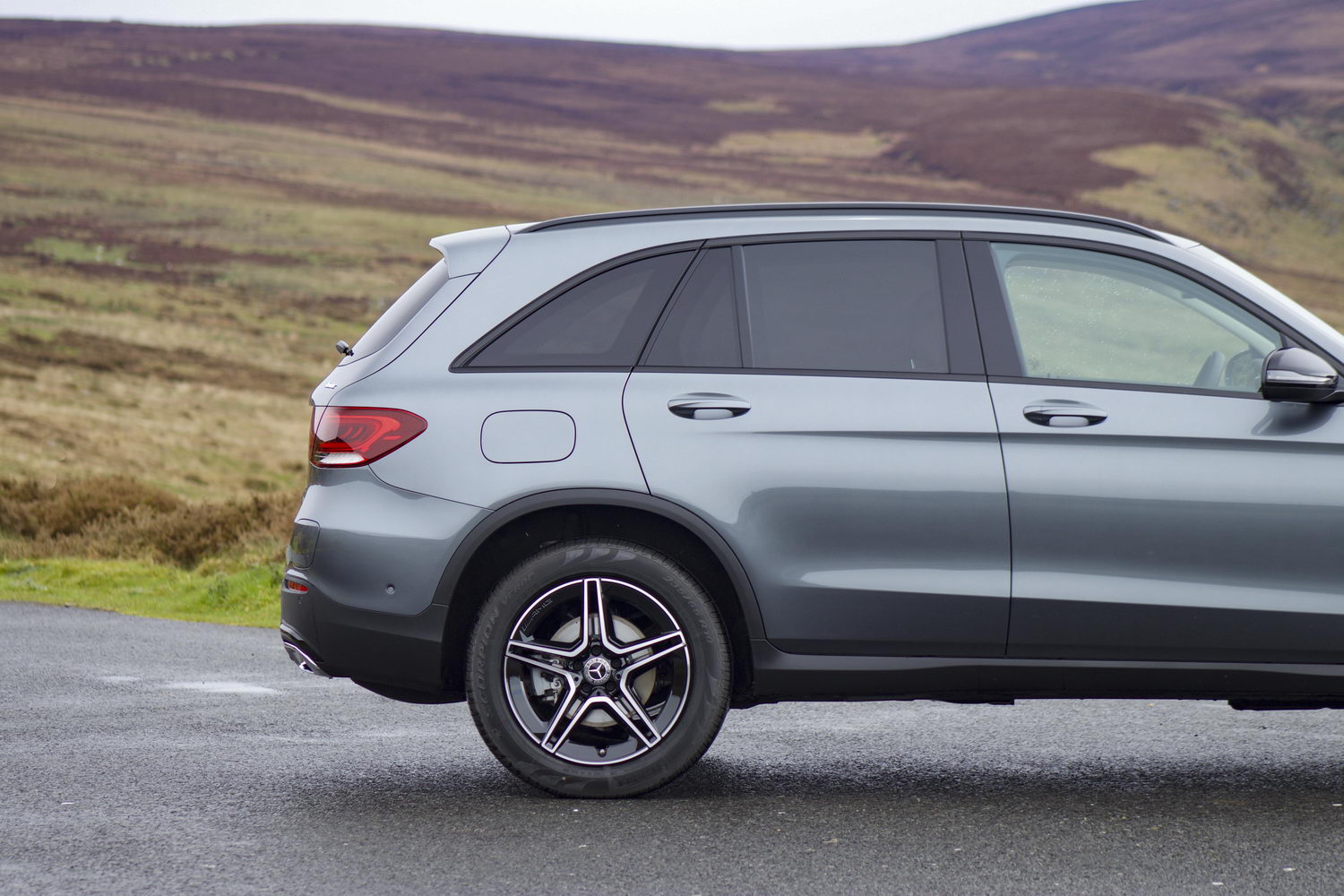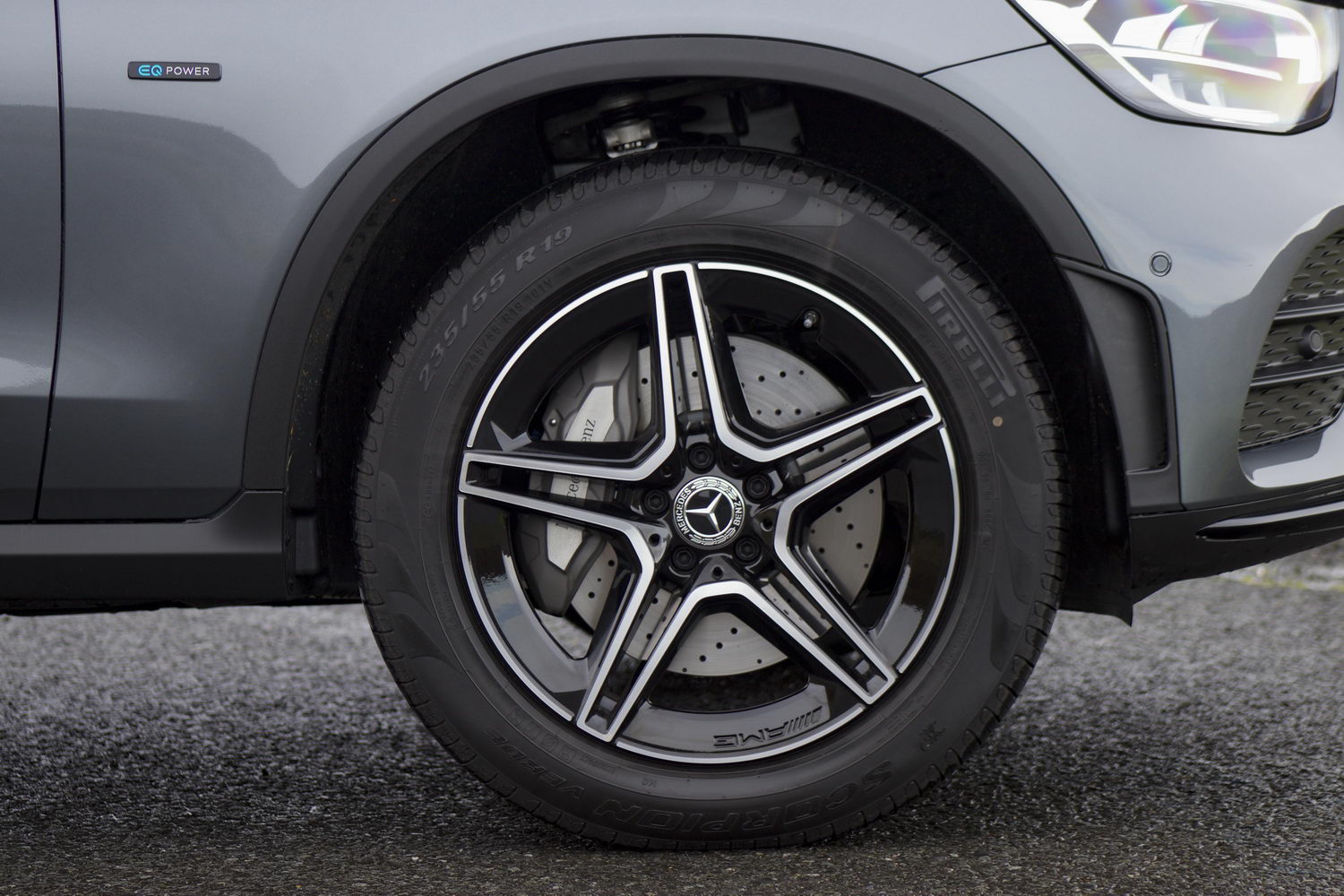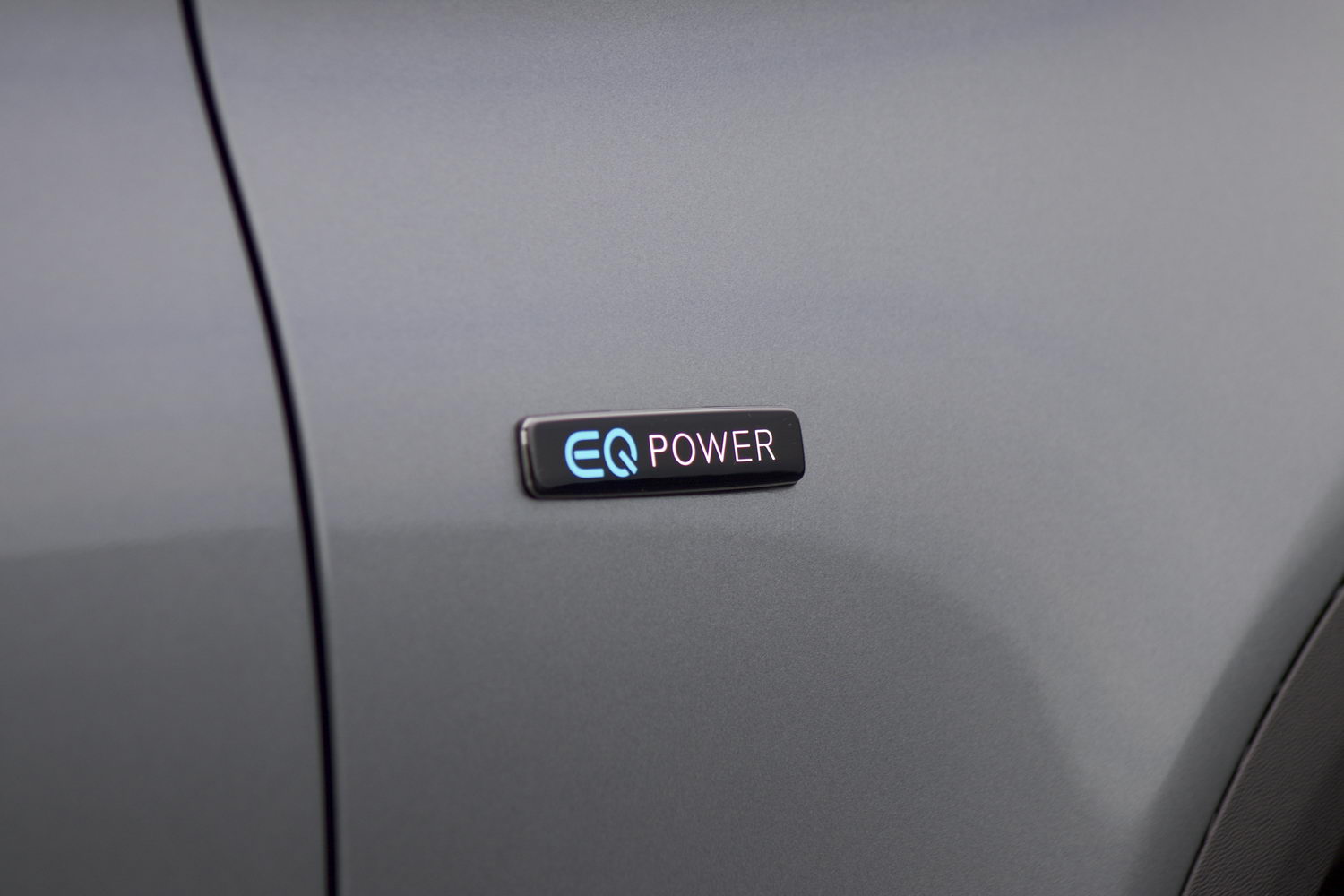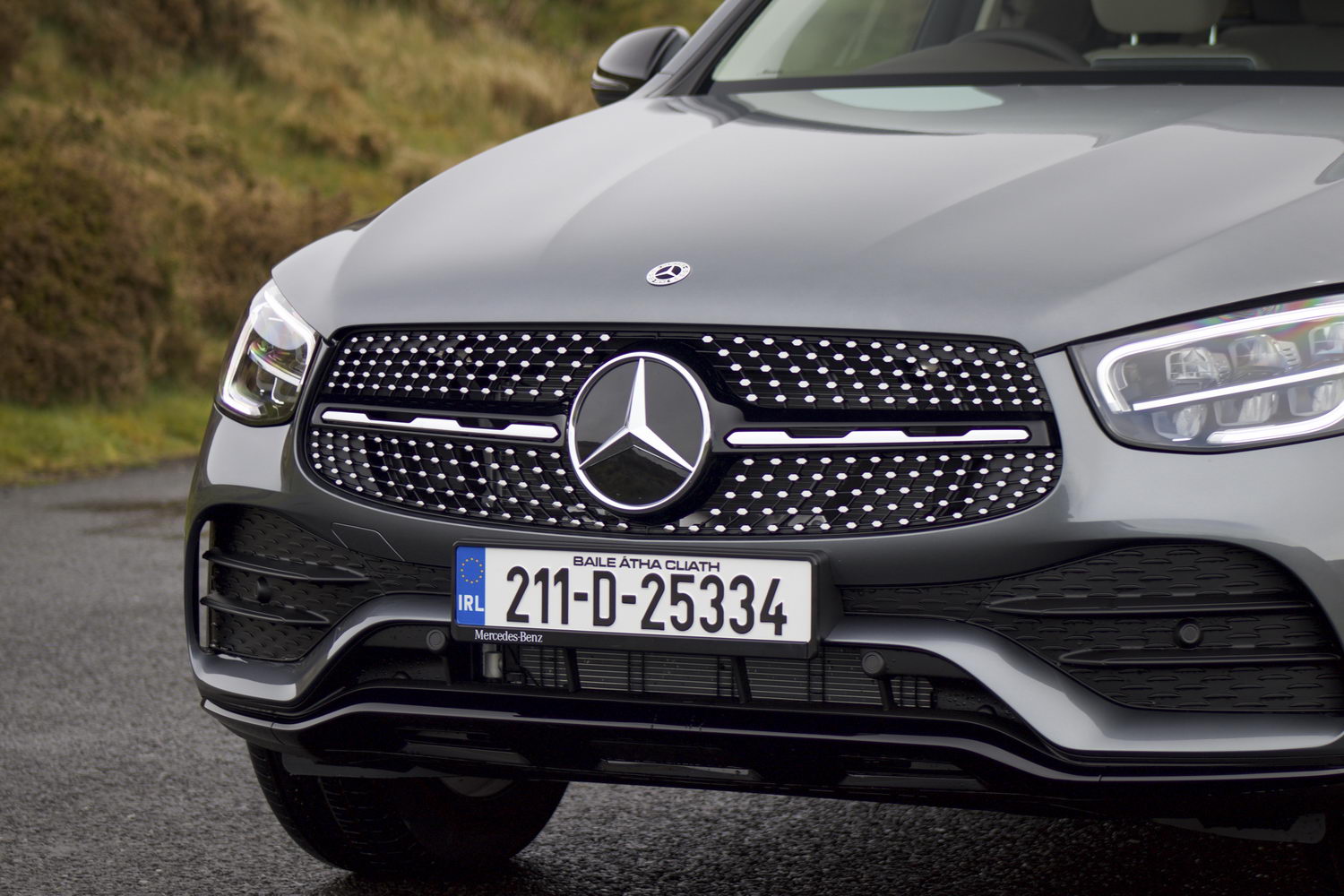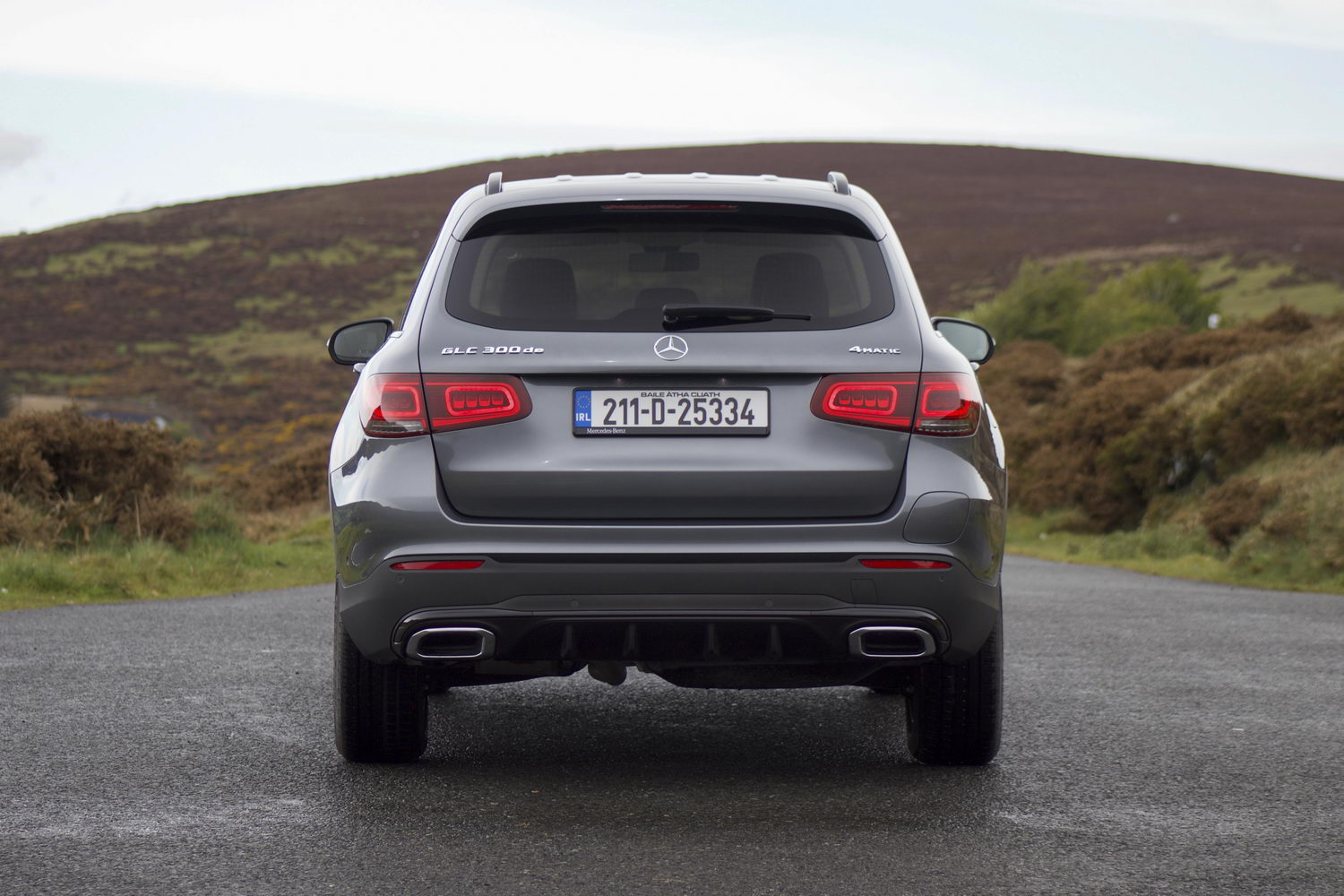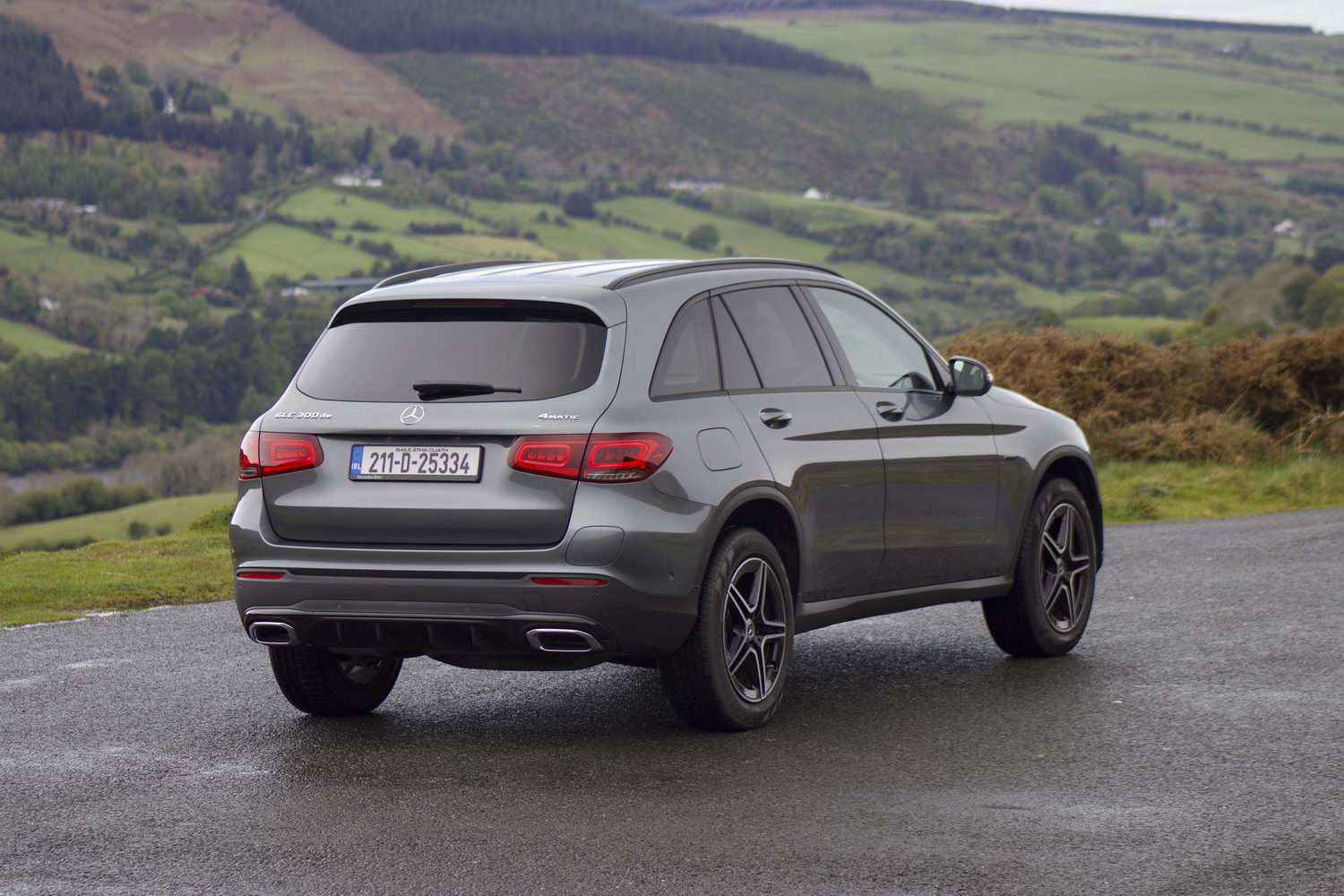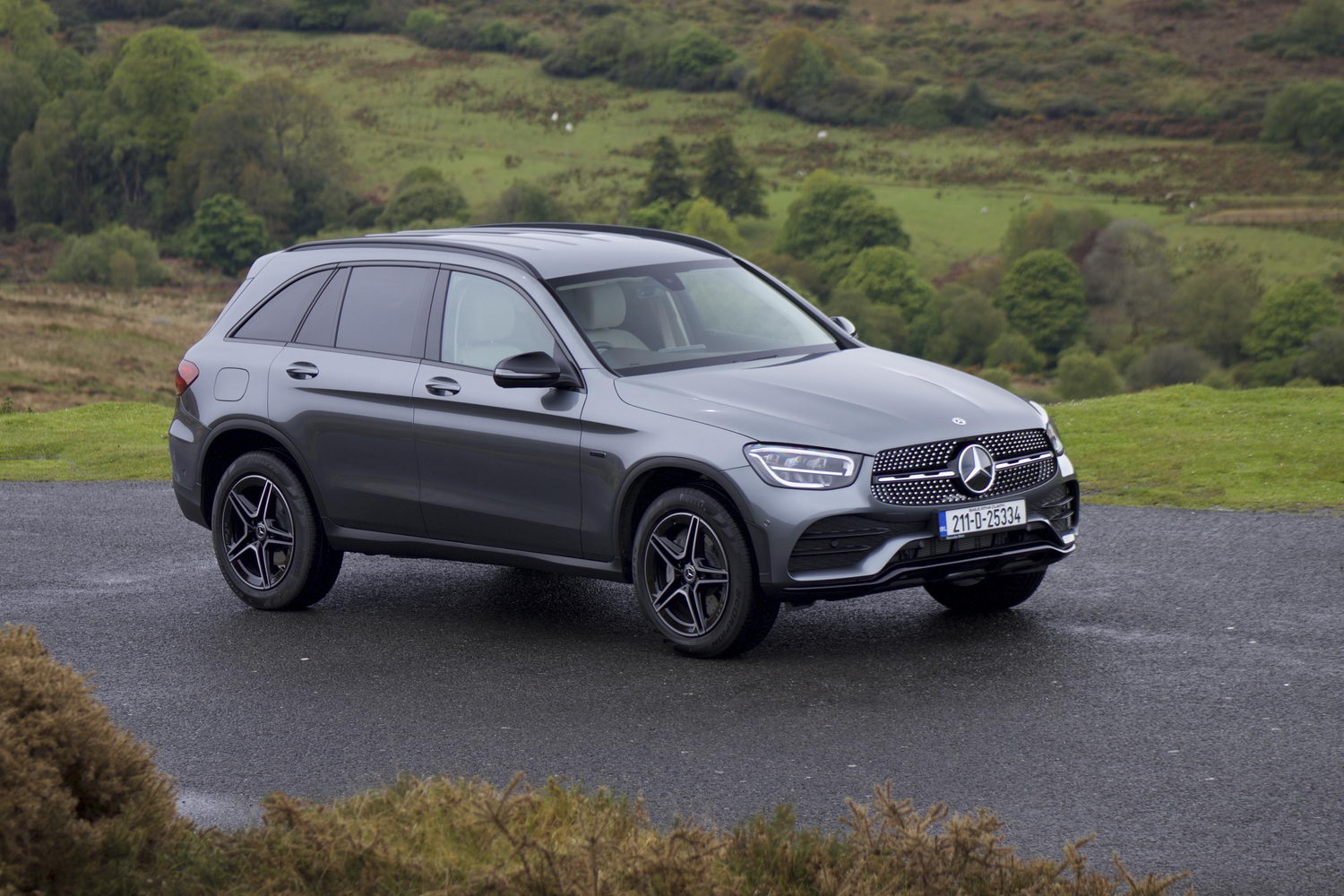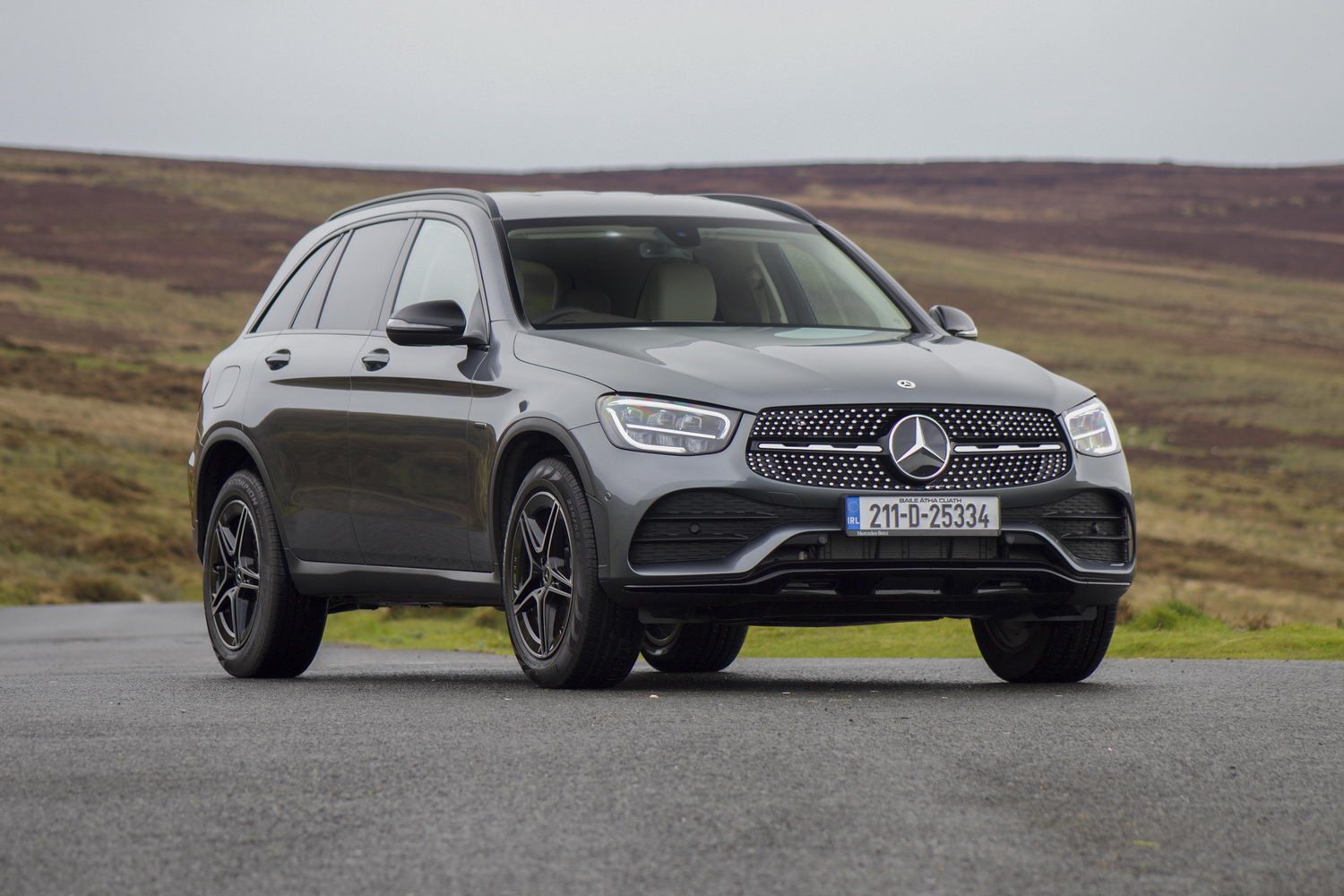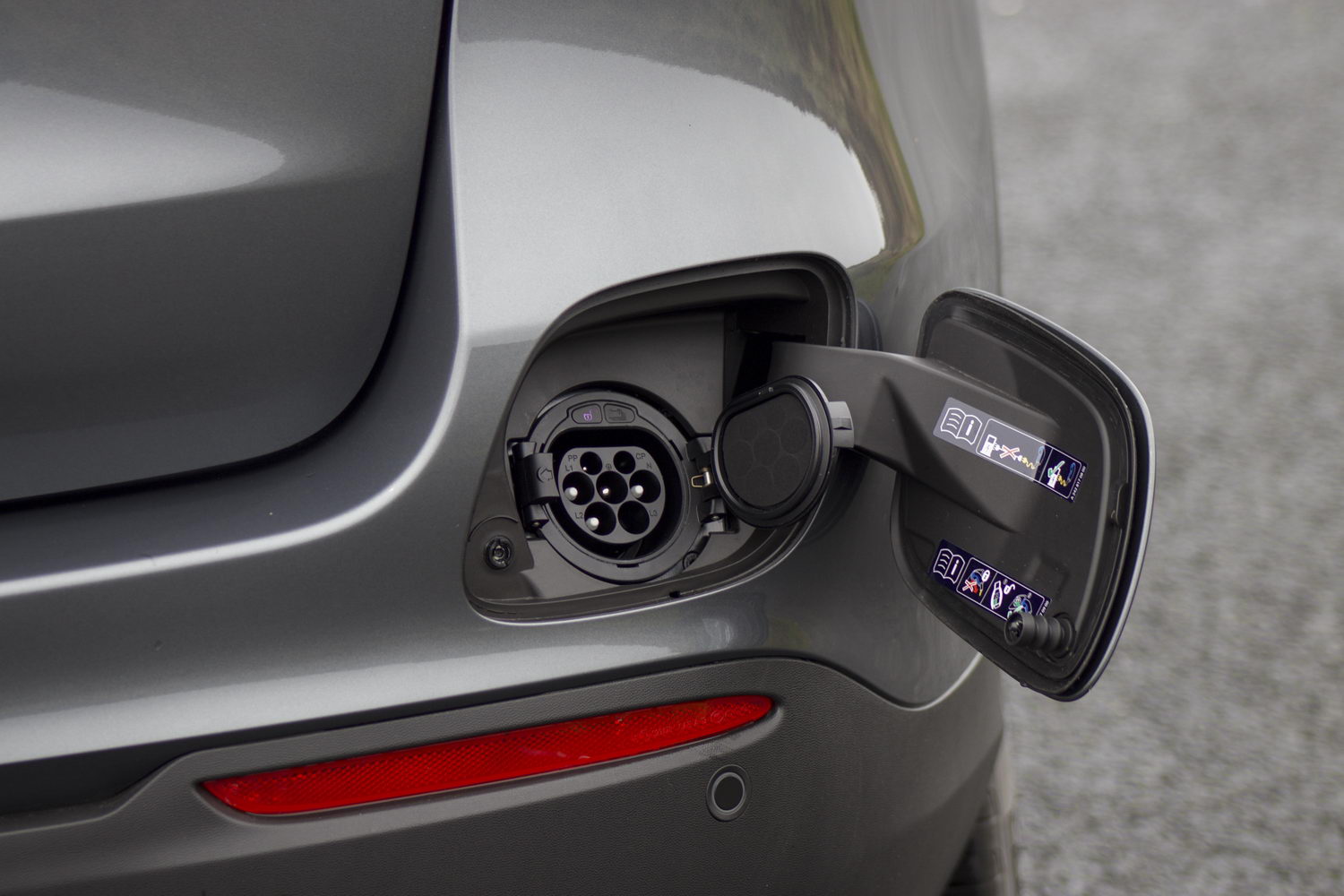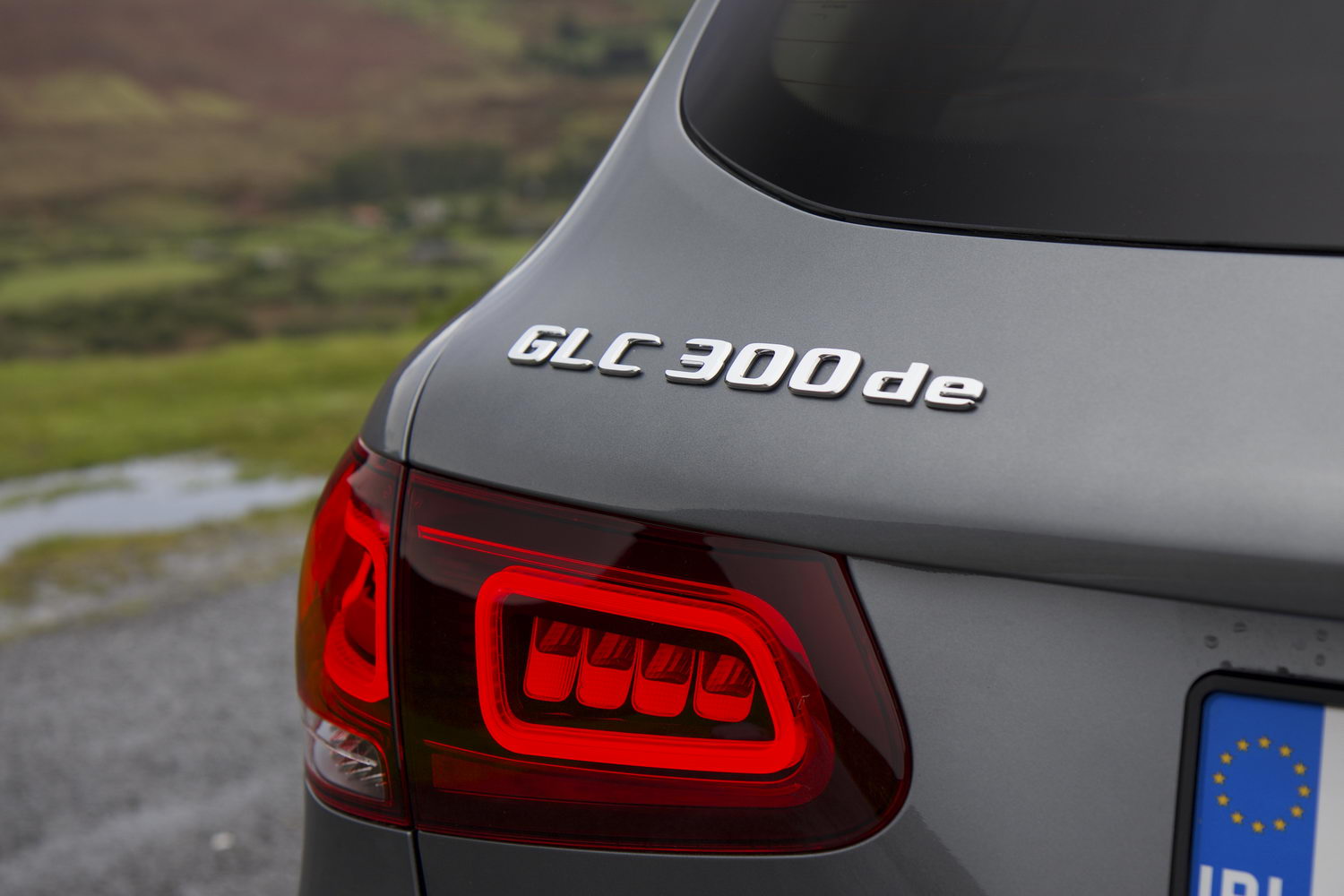Mercedes-Benz GLC overview
The Mercedes-Benz GLC, in theory, offers the broadest spread of power and power sources of any vehicle you can buy, at least in Europe. You see, while you can buy a relatively humble GLC 220 d, with its simple 2.0-litre four-cylinder diesel engine, you can also - depending on the country in which you're shopping - buy one with a V6 turbo petrol engine, a mighty twin-turbo petrol V8 and even, for a brief time, a hydrogen fuel-cell model (that's the GLC F-Cell, which is sadly now no longer on sale, and never was in Ireland). You can, however, choose from two plug-in hybrid versions, one with petrol power, and the other - as tested here - with diesel.
That makes the GLC utterly unique in its segment. Whereas major rivals such as the Audi Q5, Jaguar F-Pace, BMW X3 and the incoming new Lexus NX all offer plug-in hybrid models with petrol engines, the GLC is alone in offering diesel power. Indeed, Mercedes as a whole is alone in offering a diesel plug-in hybrid at all. Most car makers feel that the combo of plug-in hybrid tech (which is expensive to design and make) and diesel tech (increasingly ditto, as engines have to be heavily modified to meet increasing emissions legislation) makes a diesel hybrid just too darned pricey.
So, impressively, Mercedes Ireland is able to offer this GLC 300 de plug-in hybrid diesel at a starting price of €66,540 - which is more expensive than the most affordable Audi Q5 TFSI e plug-in hybrid, but not excessively so, and a little juggling of options would soon have both cars working from a level playing field.
So, is Mercedes right to offer a diesel plug-in? Can this car's zero-emissions capability turn it into the saviour of diesel? Or should we have all just gotten over our diesel addiction by now, and gone fully electric?
The Mercedes-Benz GLC model range
As mentioned, the Mercedes-Benz GLC range kicks off with the 194hp 2.0-litre turbodiesel rear-wheel-drive GLC 220 d model, which has a starting price of €54,425. That gets you a relatively dowdy model with a standard interior and standard exterior, according to Mercedes nomenclature. You can upgrade to a model with an 'Exclusive' interior for €56,449, or one with an Exclusive interior and 'Off Road' exterior for €59,554.
Standard equipment includes 18-inch alloys, an electric tailgate, LED headlamps, a three-spoke sports steering wheel, synthetic leather seats (which Mercedes calls Artico upholstery), analogue instruments with a 5.5-inch colour digital display between them, keyless start, rain-sensing wipers, live traffic information for the navigation, a reversing camera and the smallest MBUX screen in the centre of the dash, controlled by a slightly-too-fiddly trackpad between the front seats.
Upgrading to the Exclusive interior gets you heated front seats, some slightly shinier bits of cabin trim, ambient cabin lighting and velour floor mats. The Off Road exterior pack adds cutaway bumpers (supposedly for better approach angles when driving over difficult terrain) plus a lower 'protection' panel finished in silver, heat-insulated glass and slightly raised-up suspension (assuming you've stuck with the standard steel springs). Slightly incongruously, this is all available on the two-wheel-drive model.
Next up is the very popular AMG Line version at €60,763, which includes 19-inch wheels, visible exhaust pipes (they're tucked away under the bumper on standard models) and an AMG-style grille and exterior body kit, cross-drilled brake discs with upgraded calipers, and sports suspension and steering. The interior gets AMG-style contrast stitching, aluminium trim and piano-black lacquer.
The GLC 220 d has CO2 emissions varying from 151g/km for basic models, up to 170g/km depending on the choice of wheels and optional equipment.
The next step is to upgrade to a 4Matic four-wheel-drive model, which starts from €57,090 in standard form; €59,114 for the Exclusive interior; and €62,299 for the Off Road exterior. The 220 d AMG Line 4Matic starts at €63,508. CO2 emissions run from 156- to 190g/km.
Next up is the more powerful 300 d model, which uses the same core 2.0-litre diesel engine, but has 245hp. That starts at €62,040 for the standard variant, rising to €71,025 for the AMG Line. All versions of the 300 d come with 4Matic four-wheel drive as standard.
Meanwhile, there are petrol options too - a 258hp GLC 300 4Matic with standard interior starts at €71,825, rising to €76,820 for the AMG Line version. CO2 emissions are a surprisingly reasonable 171-190g/km for this engine. Of course, if you want to go totally nuts, you can go for the €84,985, 367hp turbo V6 GLC 43 AMG model, with 4Matic and more than 191g/km of CO2, or the mildly insane 510hp twin-turbo V8-engined Mercedes-AMG GLC 63 S, with its €140,520 price tag.
Or, you can go for the plug-in hybrids. Those start at €66,420 for the petrol-based GLC 300 e (which has CO2 emissions of 51-80g/km, and 320hp) or €66,540 for the diesel 300 de (50g/km) as tested here.
Mechanically, the GLC can be upgraded with full Airmatic air suspension, while there are also several option packs, including a 'Night Package' for €262, which includes 19-inch alloys (with a further upgrade to 20-inch rims available) and high-gloss black exterior trim in place of chrome.
Or, there's the 'Advantage Pack' for €3,923, which comes with a 10.25-inch centre infotainment screen, automatic dimming mirrors, connected navigation and front-and-rear parking sensors.
There's also a €9,455 'Premium Pack' - fitted as standard to both hybrid models - which includes the 10.25-inch centre screen, a 12.3-inch all-digital instrument panel, an advanced sound system with nine speakers, Multibeam LED lights, connected navigation, parking sensors, traffic sign recognition and a wireless phone charger. Above that, there's a €13,265 'Premium Plus' pack, which is basically the premium pack, but with the addition of a high-end Burmester sound system and a panoramic glass roof.
Mercedes offers a Star Finance PCP package for the GLC, with monthly repayments starting from €592, but it's worth checking the Mercedes Ireland website for the most up-to-date offers.
The Mercedes-Benz GLC 300 de interior
The interior of the GLC 300 de is at once a little old-fashioned, and yet rather satisfying. Perhaps that's because our test car came with the 'Exclusive' interior, which includes high-gloss wood trim that's rather pleasantly 1980s in its appearance. The rest of the cabin is very familiar if you've ever driven or sat in a GLC, which has been on sale since 2015.
Unlike other Mercedes models, whose 'MBUX' digital dashboard can consist of one, unbroken frame that surrounds the two screens, the GLC's digital screen setup is divided in two - there's a separate, free-standing 10.25-inch display in the centre of the dashboard, while the 12.3-inch digital instrument panel sits inside a traditional instrument binnacle. It's perhaps a less striking look than you'd find in an equivalent E-Class or the larger GLE SUV, but it works well nonetheless, and is basically lifted wholesale from the previous model of C-Class (with which the GLC shares most of its platform and mechanical makeup).
As you'd expect of a Mercedes, initial quality feels very good indeed, with all plastic, wood and metal surfaces looking and feeling absolutely out of the top drawer. The row of three 'bullseye' air vents and neat chrome switches that run across the centre of the dash look good and feel satisfying to use.
The MBUX infotainment system can be a touch information-dense at times, but once you get used to it, it's reasonably easy to use, although the 'Hey, Mercedes' digital voice assistant can be a bit too keen to chime in when you don't actually want to use voice control.
Thankfully, the GLC has not yet upgraded to the latest capacitive button layout for the steering wheel, so there are simple, easier-to-use physical buttons on the wheel for audio and cruise controls. Behind the wheel, on the right, is a single stalk for selecting drive and on the other side another that takes care of the indicators, wipers and headlight flash.
Is this a good time to remind you that we still mourn the loss of the old Mercedes cruise control stalk? It used to sit behind the wheel on the left, and was the simplest, easiest cruise control setup to use. It has been replaced by those steering wheel buttons, which are fine, but less intuitive to use.
Seat comfort is exceptionally good, and the driving position strikes a good balance of seating up high, for visibility, but not making you feel as if you're perched up on a barstool. The seat adjustment is a little fiddly, though, and it can take a few goes before you find your ideal driving position.
The centre console, which sweeps up in a torrent of glossy wood from between the seats, has a usefully large oddment space behind a neat flap, and you'll find two cupholders (which, because the gear shifter is on the column, don't get in your way when driving) and a USB-C socket in there too, as well as the wireless phone charger.
Under your elbow is a reasonably large storage box with a 'butterfly' lid, and there's another USB-C socket in there, too. Between those two lies the trackpad controller for the infotainment system, which still feels more awkward to use than the old Comand rotary. Either side are physical buttons for radio volume, parking sensors, traction control and the Drive Select switch, which allows you to choose from Dynamic, Comfort, or Eco driving modes. In this hybrid model, this is also the button that allows you to choose whether you want to be in hybrid or fully-electric mode.
Space in the back is impressive, and rear seat passengers get their own USB-C sockets, as well as ISOFIX points in the outer two rear seats. Space in the boot is rather less good, although that needs some qualification.
Packaging the 13.5kWh battery along with a 50-litre diesel tank has forced some compromise, which sees its capacity reduce from 500 litres in a regular GLC to just 395 litres here. You can expand that to 1,455 litres by flat-folding the back seats, but even so that's a disappointing figure. The qualification is that you get a completely flat load floor (with a little storage flap underneath to stow your charging cables) whereas the E-Class saloon, with the equivalent 300 de hybrid powertrain, gets a big, awkward sloped step in the boot that is even less convenient.
The Mercedes-Benz GLC 300 de driving experience
Obviously, the first question that must be asked is 'how far can it go on a full battery?' The answer, as ever, depends hugely on how and where you drive it. Mercedes claims a one-charge range of 43km, which is OK but nothing too spectacular. That will plummet quickly if you drive on the motorway - we rarely saw better than 30km with a full battery - but you might squeeze it up to 45- or even 50km if you drive very carefully around town. Oh, and the charging point location - down low, at the right, on the back bumper, is also rather awkward.
The good news is that, thanks to its diesel engine, the GLC is decently economical on longer runs. Note that we say 'decent' - on a run from Dublin to Cork and back, mostly using motorways, we averaged between 6.0- and 6.5 litres per 100km, which is, again, fine but nothing exceptional for a car of this size. Certainly, it seems a little poor considering that, using the same powertrain in the E-Class saloon, we averaged 5.3 litres per 100km on long motorway runs.
The upside is that the GLC's battery does charge quite quickly, even from a domestic three-pin socket (and faster still from a proper 7.4kW home charger).
There's more good news on the refinement front - the way the system mixes diesel and electric power is very smooth, and the combustion engine is refined once it's warmed up, so long journeys are pretty relaxing.
That's helped by the standard-fit 4Matic four-wheel drive, which makes tackling poor weather conditions a bit more of a doddle, and very good dynamic performance. In spite of its weight (2,125kg compared to a GLC 220 d's 1,835kg) the GLC 300 de feels taut and precise to drive - more so than the E-Class 300 de saloon we recently tested.
There's good weight and reasonable feel and feedback from the steering, and the GLC turns neatly and grips well even through tricky corners. The only upset is to the ride quality, which, thanks to having to deal with the excess weight, can be a bit too firm at times. Upgrading to the optional air springs would doubtless help with that.
The nine-speed automatic gearbox is mostly very good, but just occasionally lets the side down with a hurried shunt into the next gear, especially on downshifts. You'll notice that if you try to exploit the GLC 300 de's prodigious performance - with 306hp on tap, it really shifts when you ask it to, and a 6.2-second 0-100km/h time is impressive for something with this kind of weight figure. Of course, most of the time, driving in hybrid mode, you'd never figure that the 300 de was such a quick car, nor need to deploy that quickness, but it's nice to know it's there.
Alternatives to the Mercedes-Benz GLC 300 de
Well, the GLC 330 de has one obvious major rival, and that's the petrol-engined GLC 300 e plug-in hybrid. The two cars are only separated by €200 in price tag terms, and you'll pay the same annual €140 in motor tax. The petrol car would, obviously, be significantly thirstier on long runs, but if most of your driving is in town, having a petrol engine could be a good idea, given the possibility of city-centre bans for diesel engines coming down the track.
Alternatively, you could go for Audi's petrol-powered Q5 TFSI e, or the newly-introduced Jaguar F-Pace P400e, which has a whopping 400hp and a very attractive new interior.
Coming soon is an all-new Lexus NX, which will be available both as a conventional hybrid and, for the first time, a plug-in hybrid, and given the excellent all-round performance of the new Toyota RAV4 Plug-In Hybrid (which shares a lot of components with the Lexus), that could make for a very good choice.
The joker in the pack is the Audi Q4 e-tron - fully electric, with a potential 510km one-charge range, a cabin and boot that actually out-strip the GLC for space, and yet a price tag that can save you more than €10,000 compared to the Mercedes.
Our verdict on the Mercedes-Benz GLC 300 de
The problem for the GLC 300 de is the problem for all plug-in hybrids. Which is that if you have a driveway and a home charging point - both of which you'll need to maximise the capability of the car - then you should possibly just be looking at a long-range fully-electric car instead. That said, the GLC will make a tempting option for those who want to be able to whizz silently and saintly around town on electric power, but don't fancy throwing themselves at the mercy of the public electric charging network for longer journeys. Good to drive, surprisingly reasonably priced and with decent long-range economy, the GLC 300 de proves that diesel and electric doesn't have to be confined to rail-roads...
What do the rest of the team think?
From an aesthetic standpoint the GLC is a nice thing, even though the interior is clinging on to Mercedes' older design that isn't as modern as the latest MBUX dual-screen setups. Nevertheless it seems solidly made and there's decent room inside. The plug-in hybrid aspect of it is average at best; the most electric range I saw was 32 kilometres in mixed urban driving - a good deal shorter than the official 43 kilometres. The diesel element works with a degree of refinement but hauling around the added weight of the hybrid system dents the fuel economy figures. This setup best serves only a very slender number of people.
Dave Humphreys - Road Test Editor
This is a better application of the 'de' plug-in diesel hybrid idea than the E-Class is, for sure and though the GLC's interior is dated by the latest Mercedes cabins, it's still a lovely place to spend many a mile. Thing is, very few buyers need to marry long-distance economy with the ability to drive in zero-emissions mode, and the compromises made to achieve that (i.e. the considerable weight and smaller boot) detract significantly from the car. If you want a hybrid, buy the petrol one Neil mentioned; otherwise, stick with the still-impressive diesels for high-mileage use.
Shane O' Donoghue - Editor

